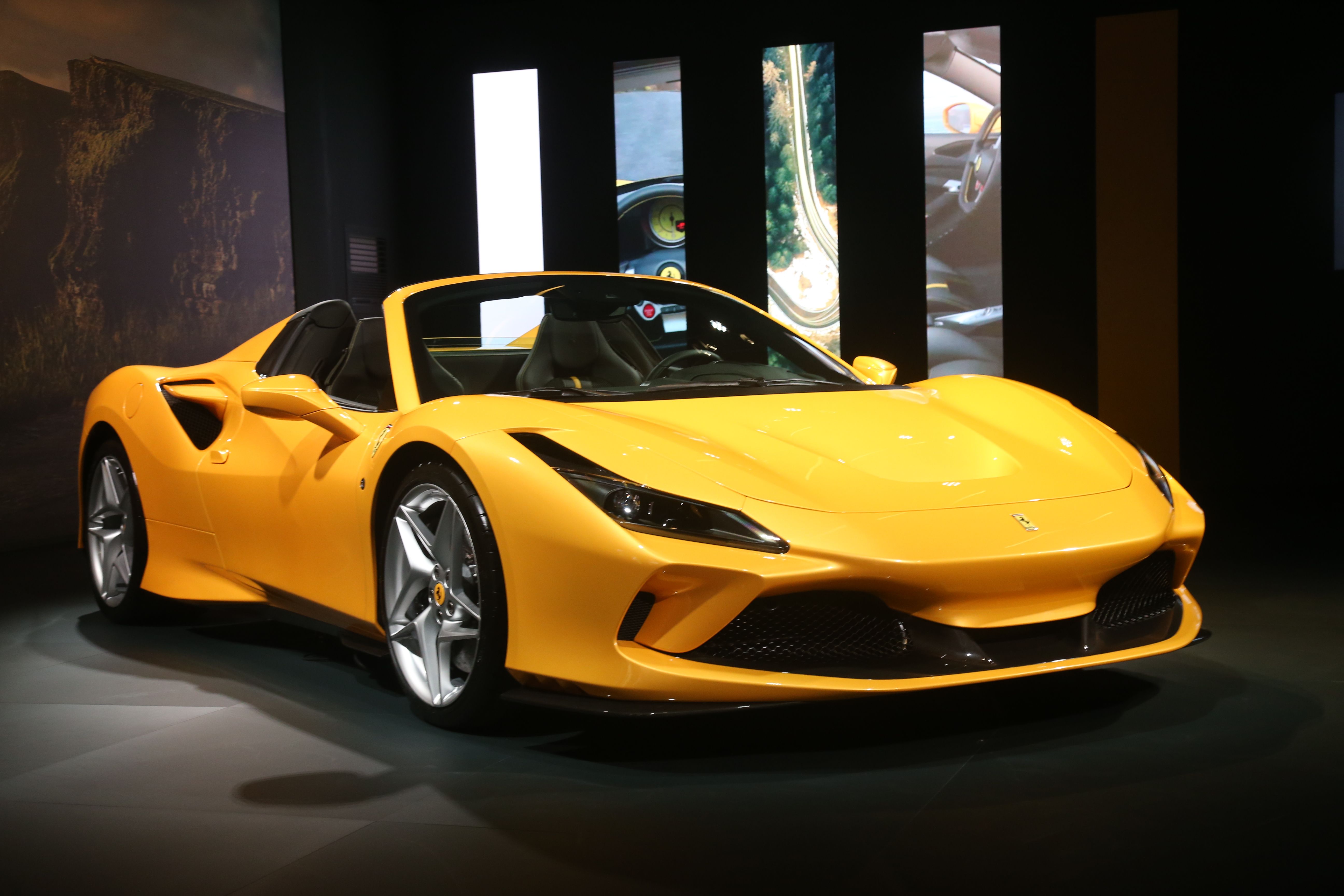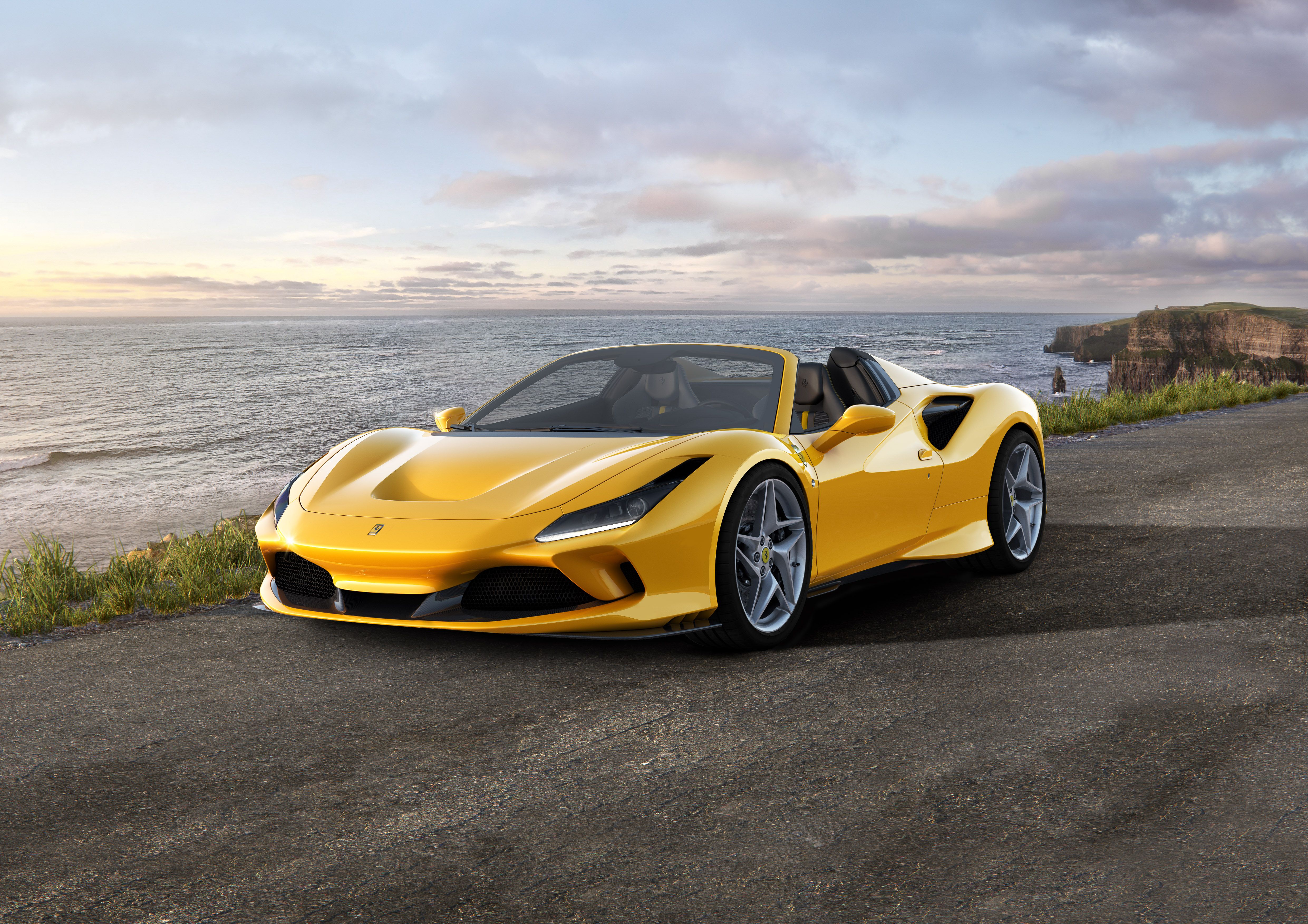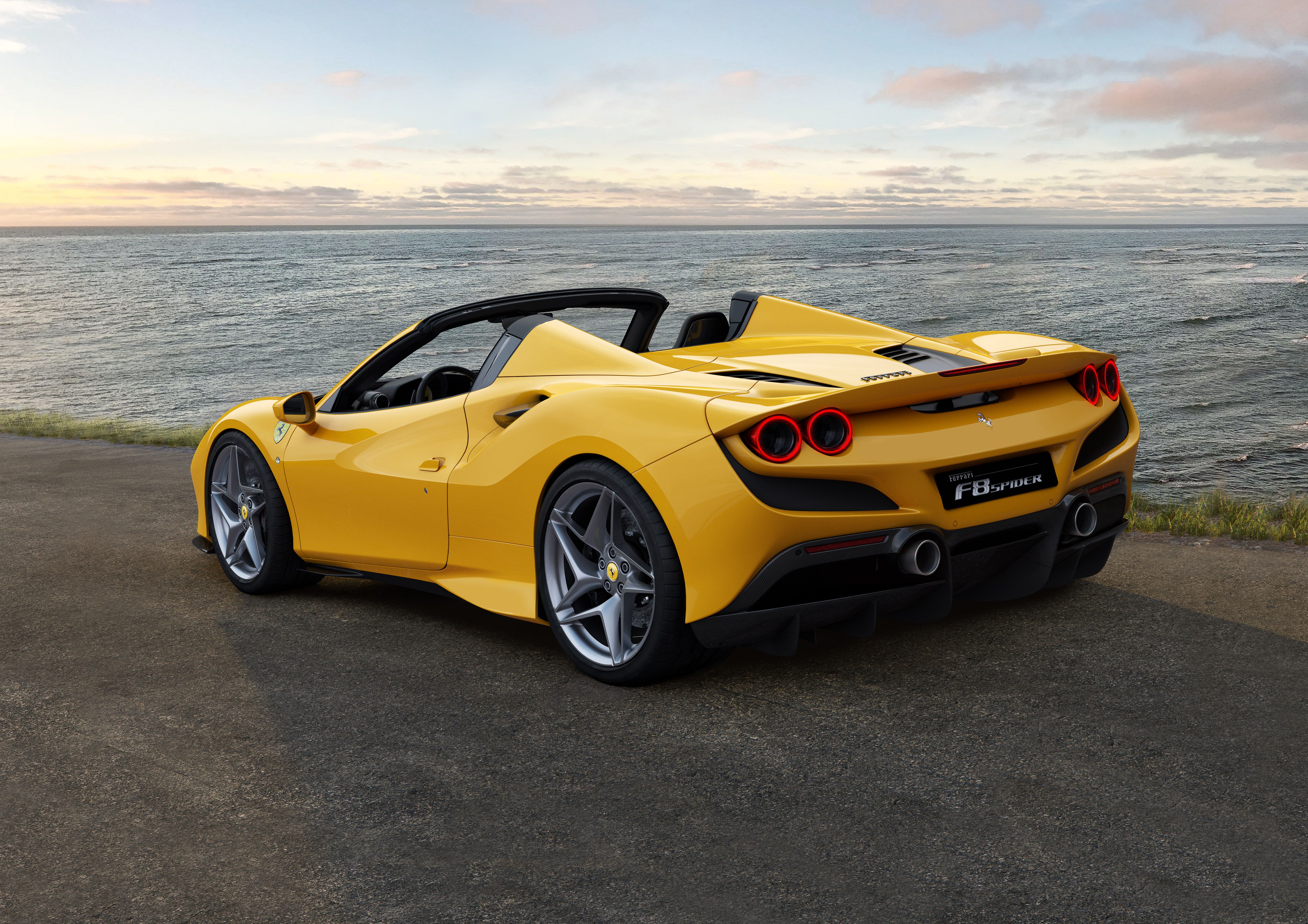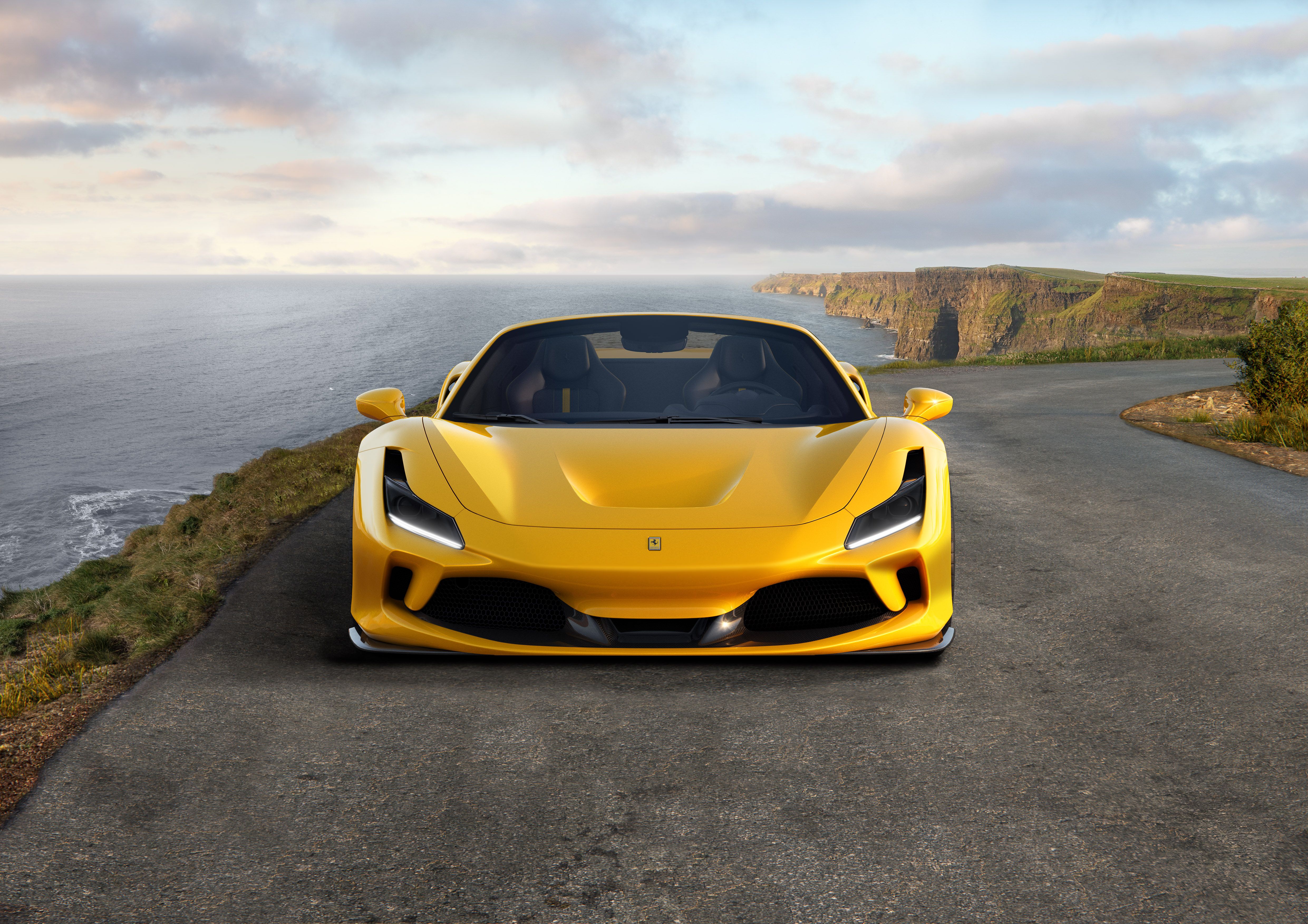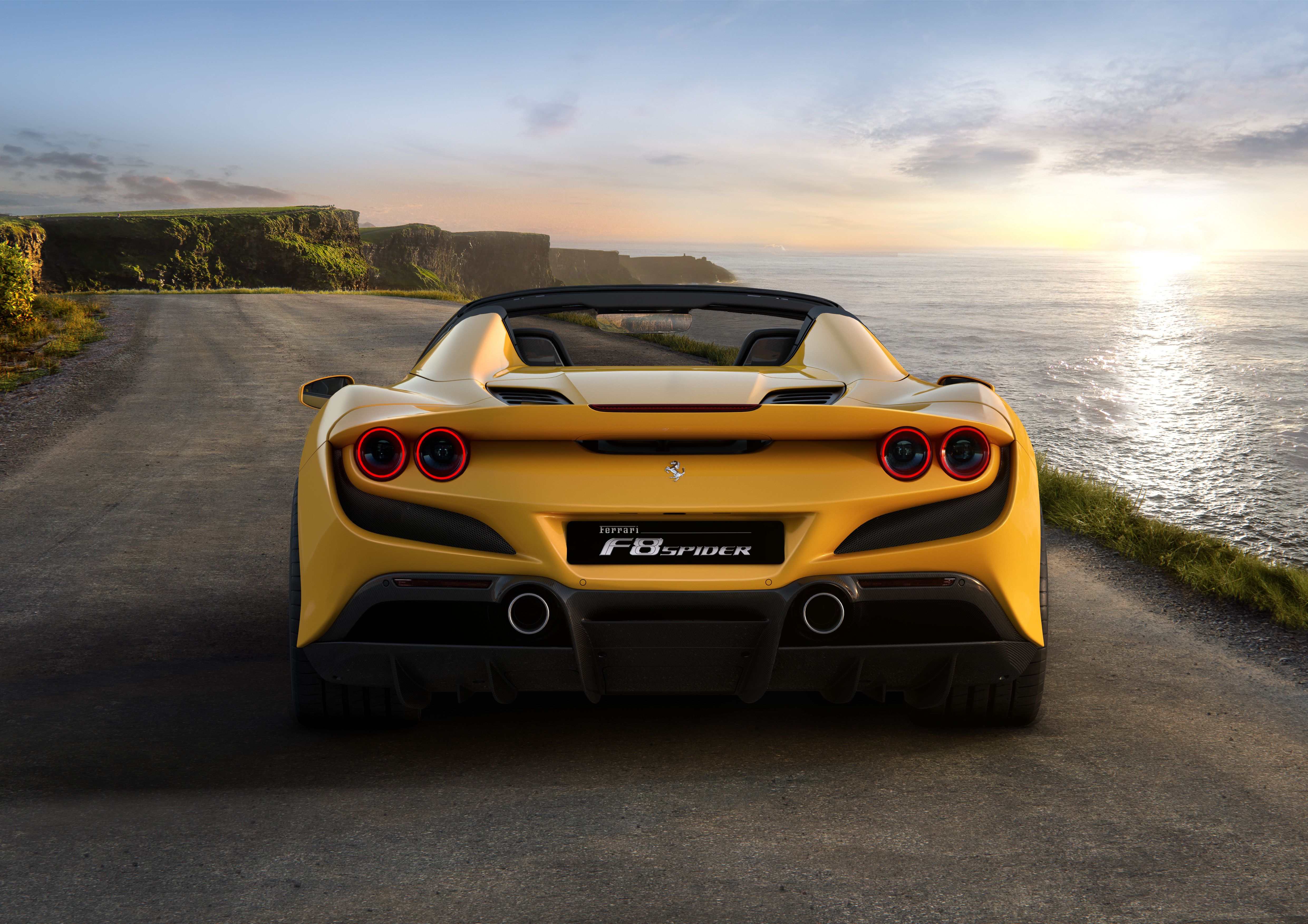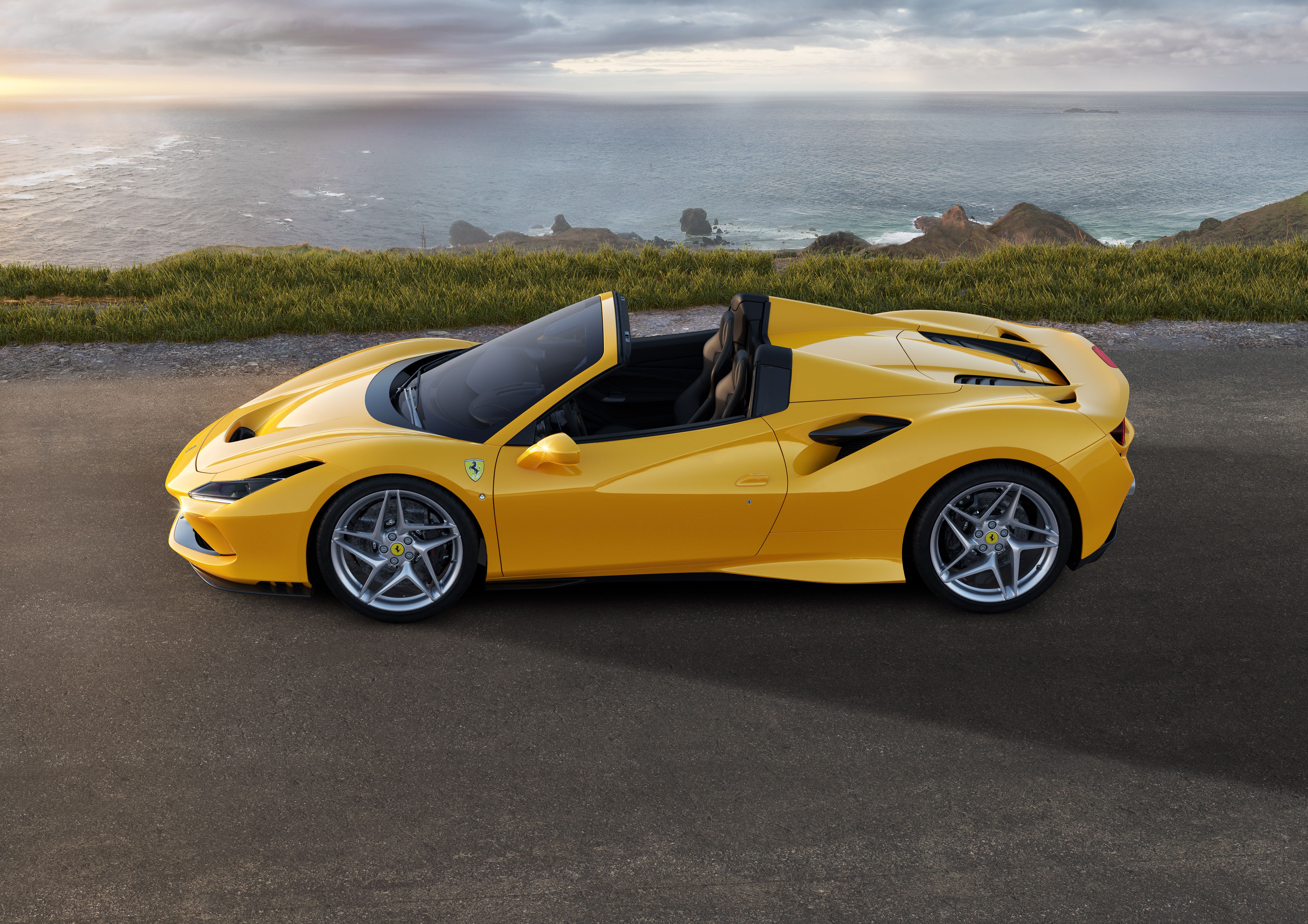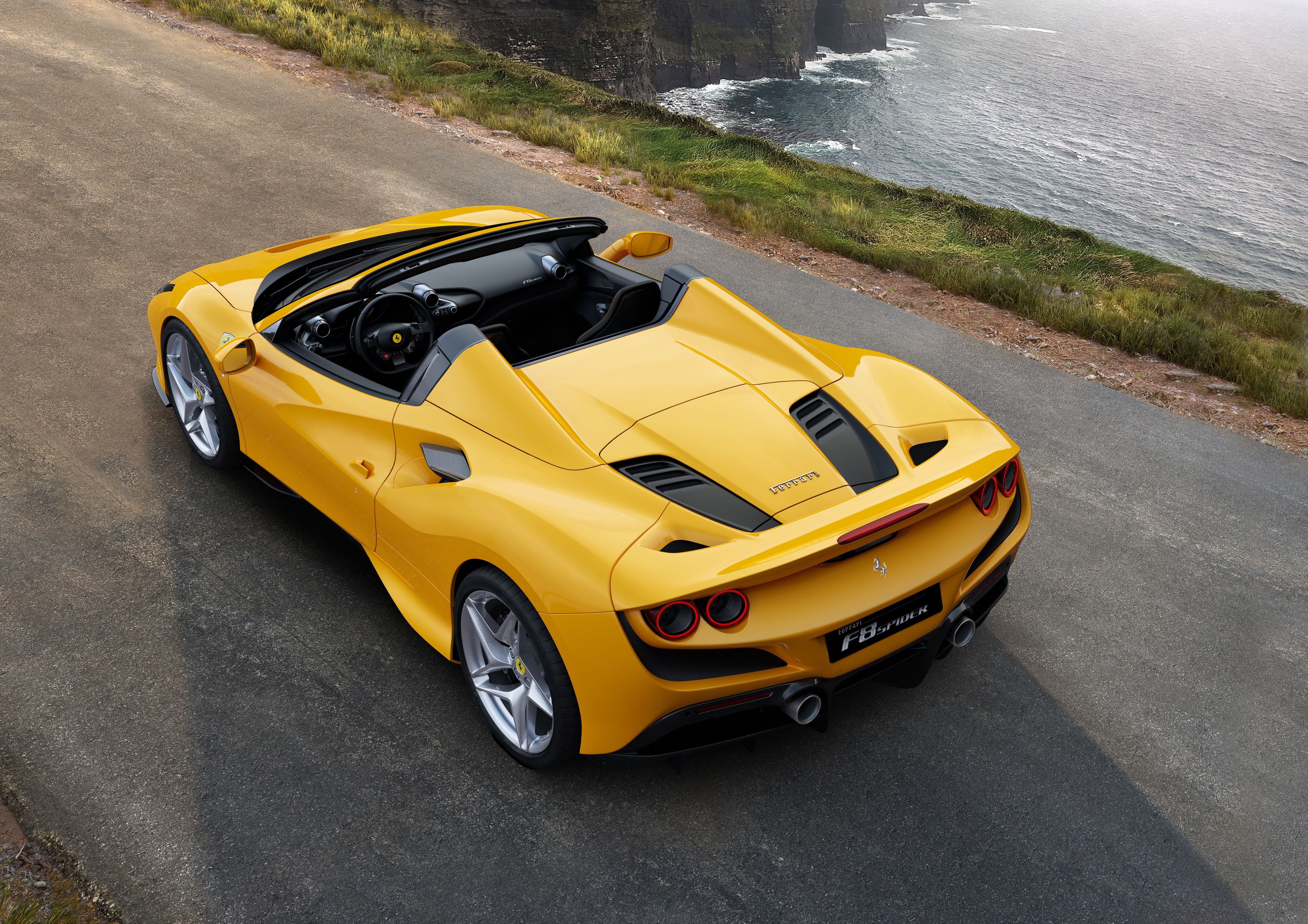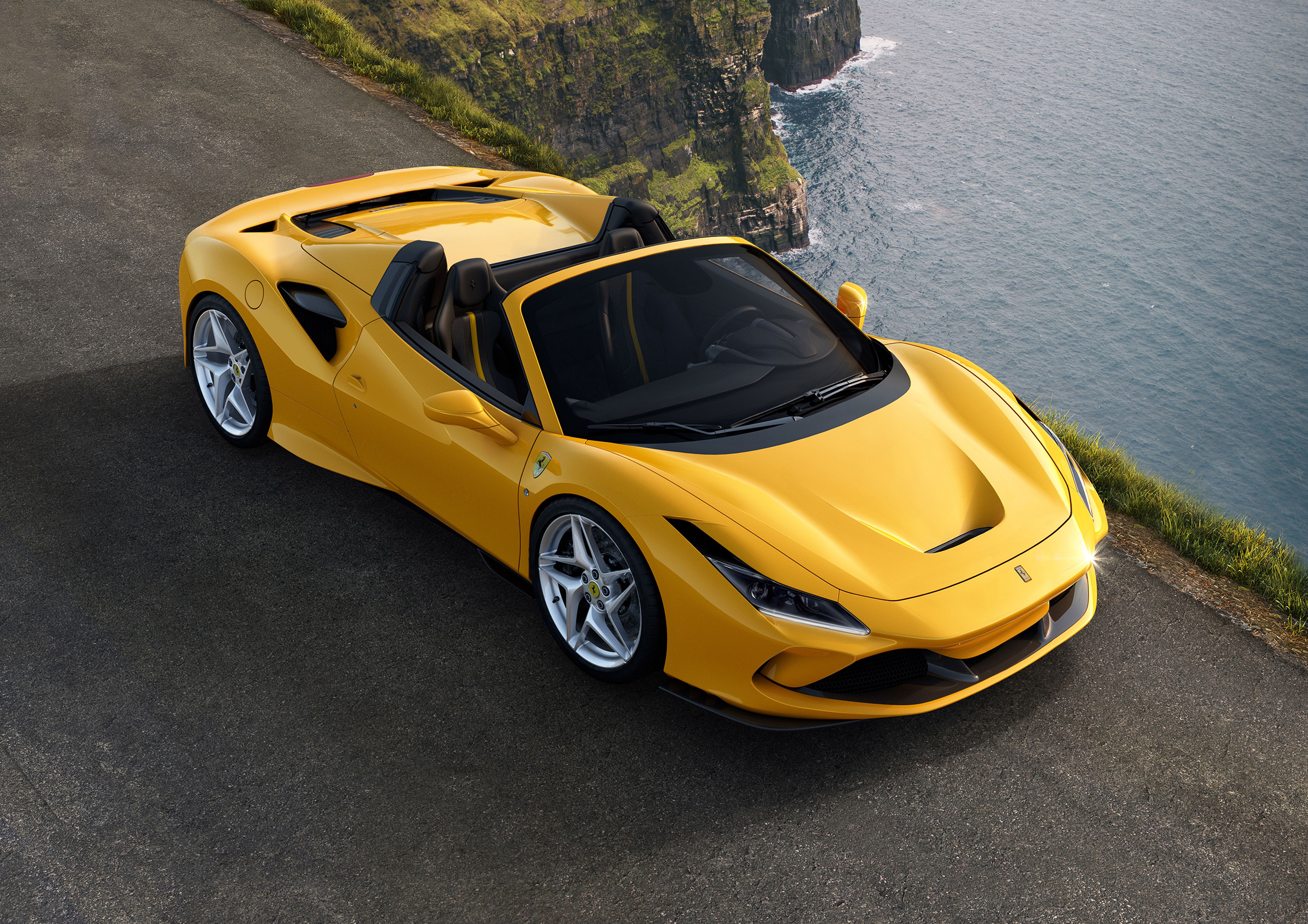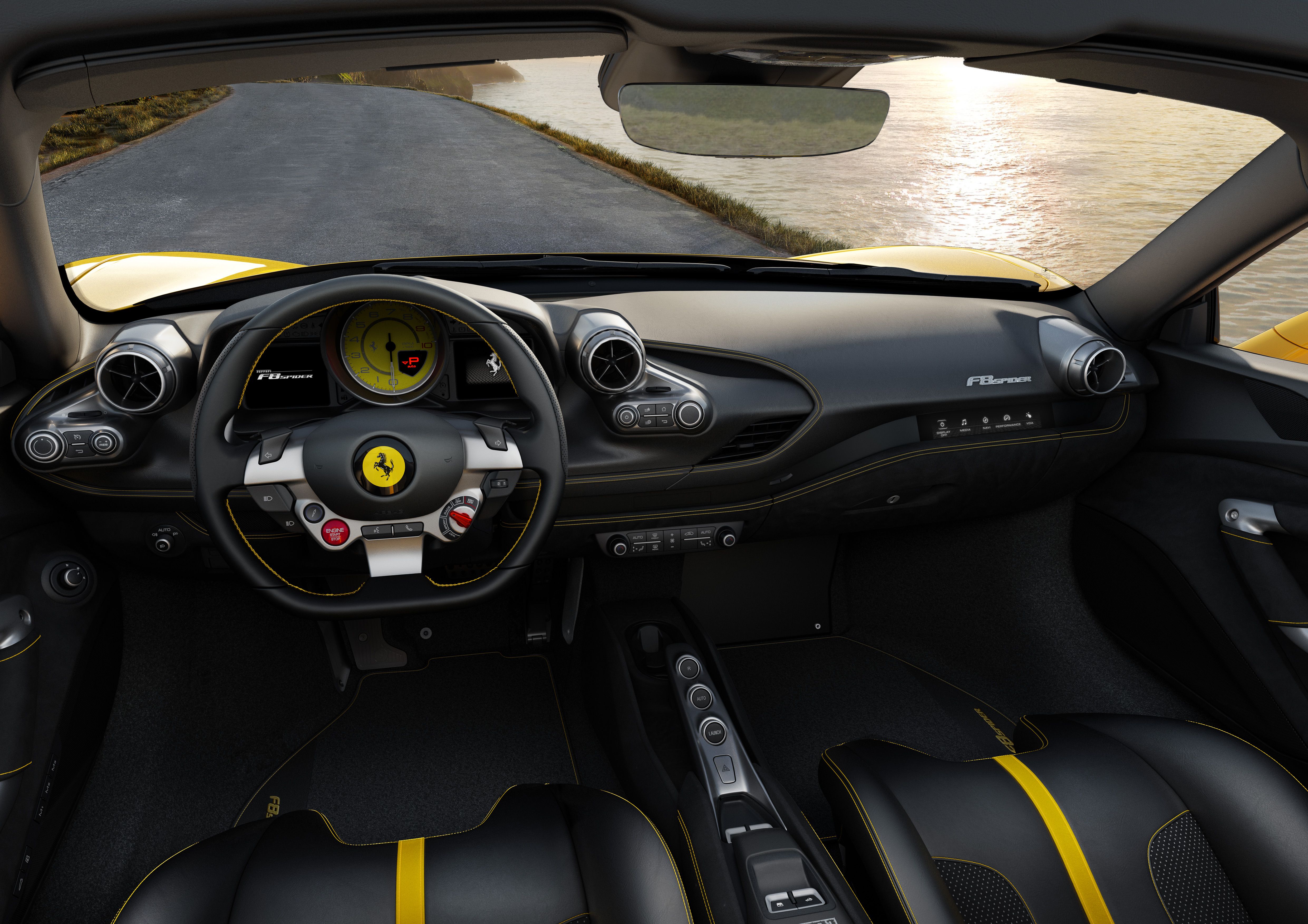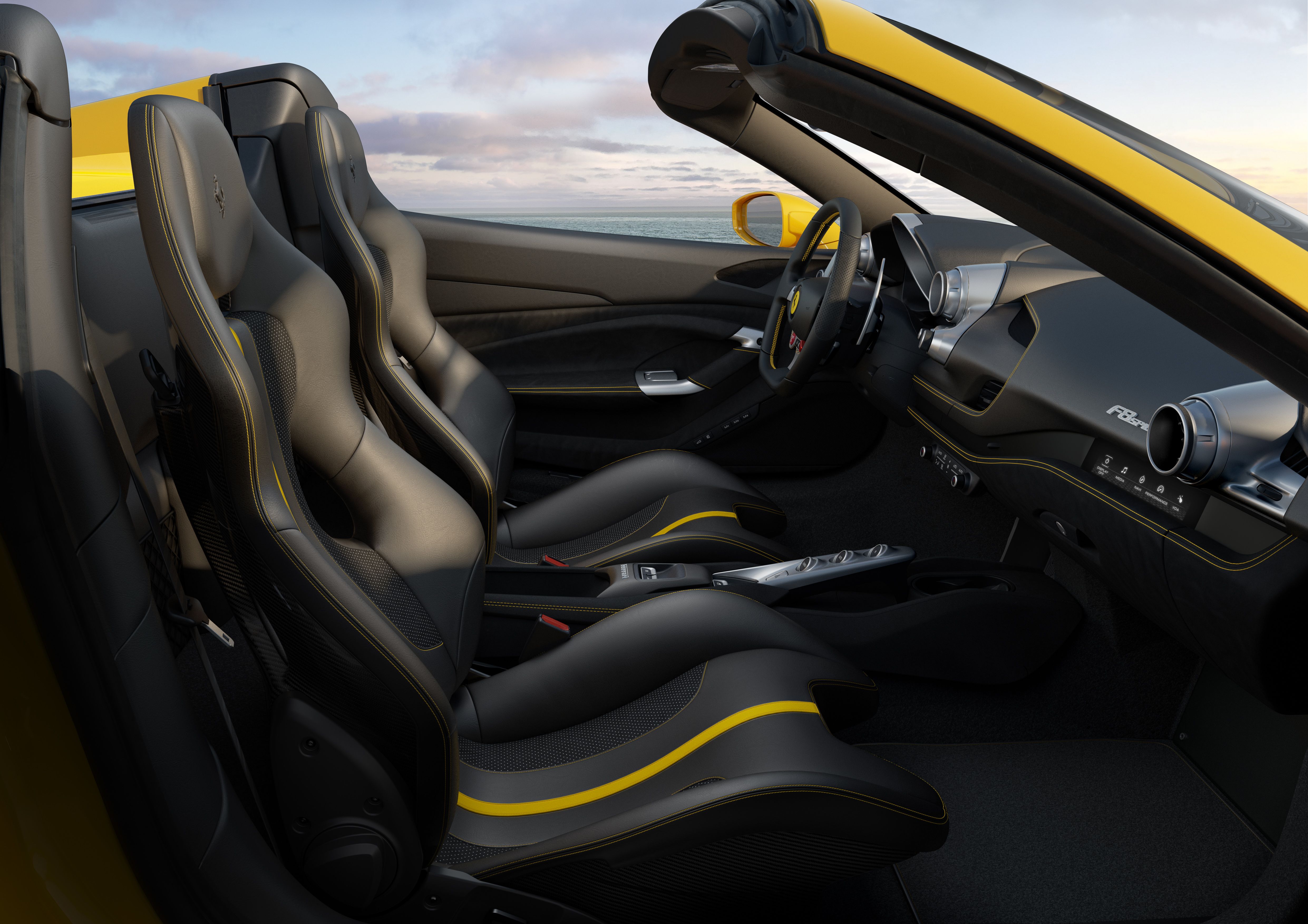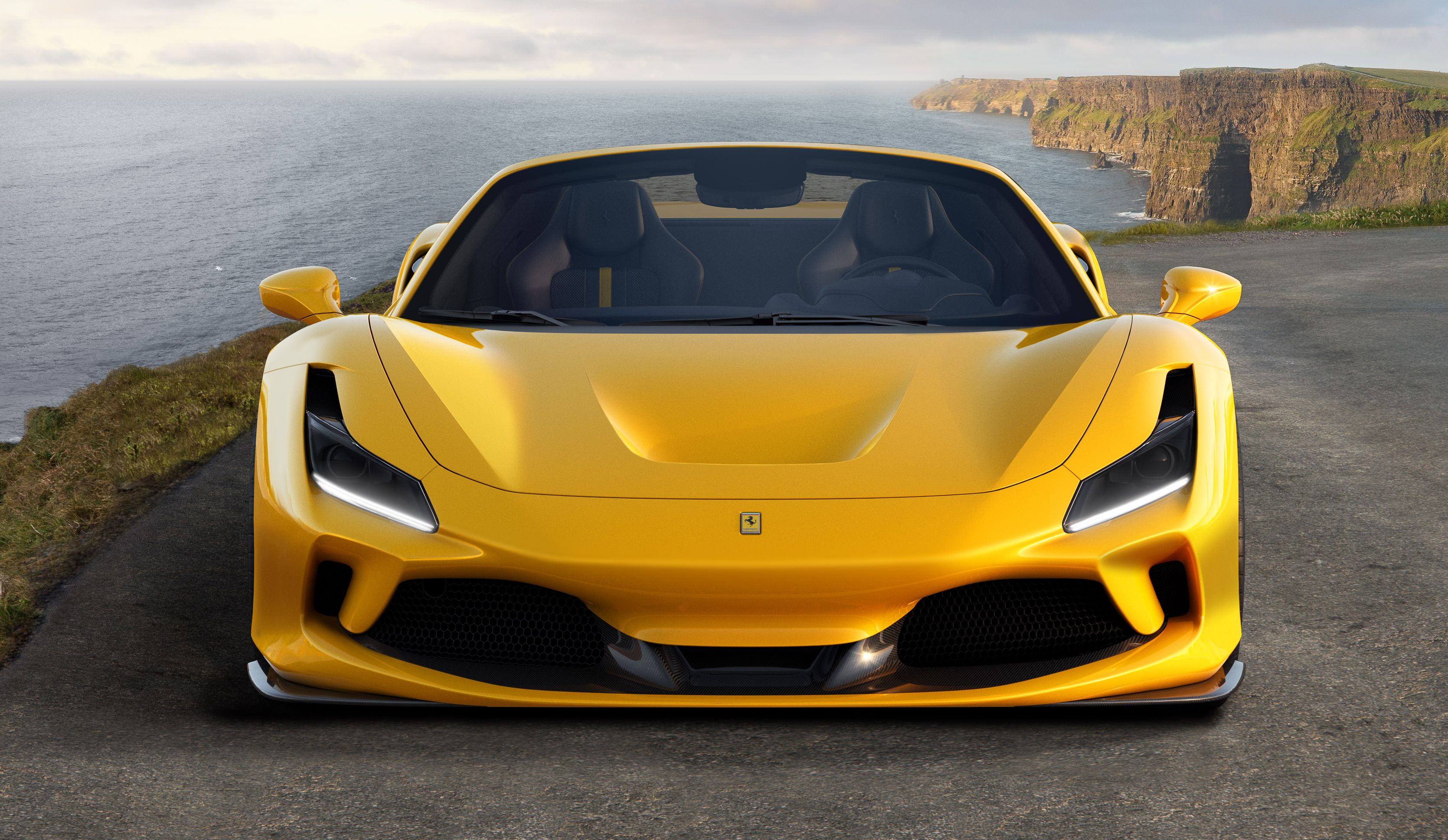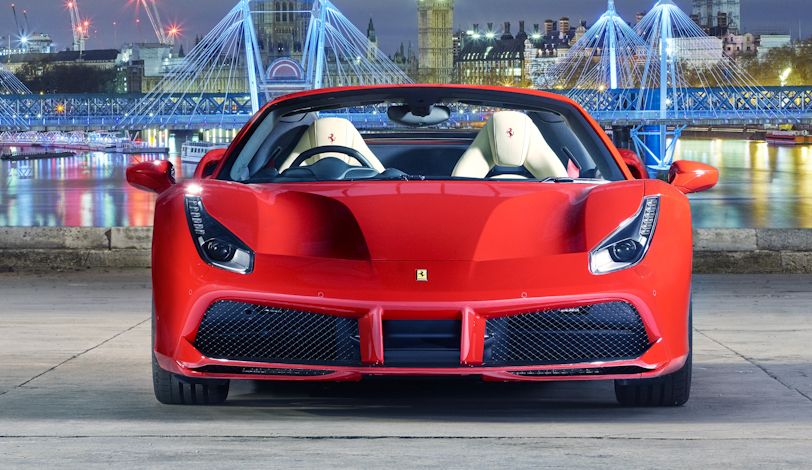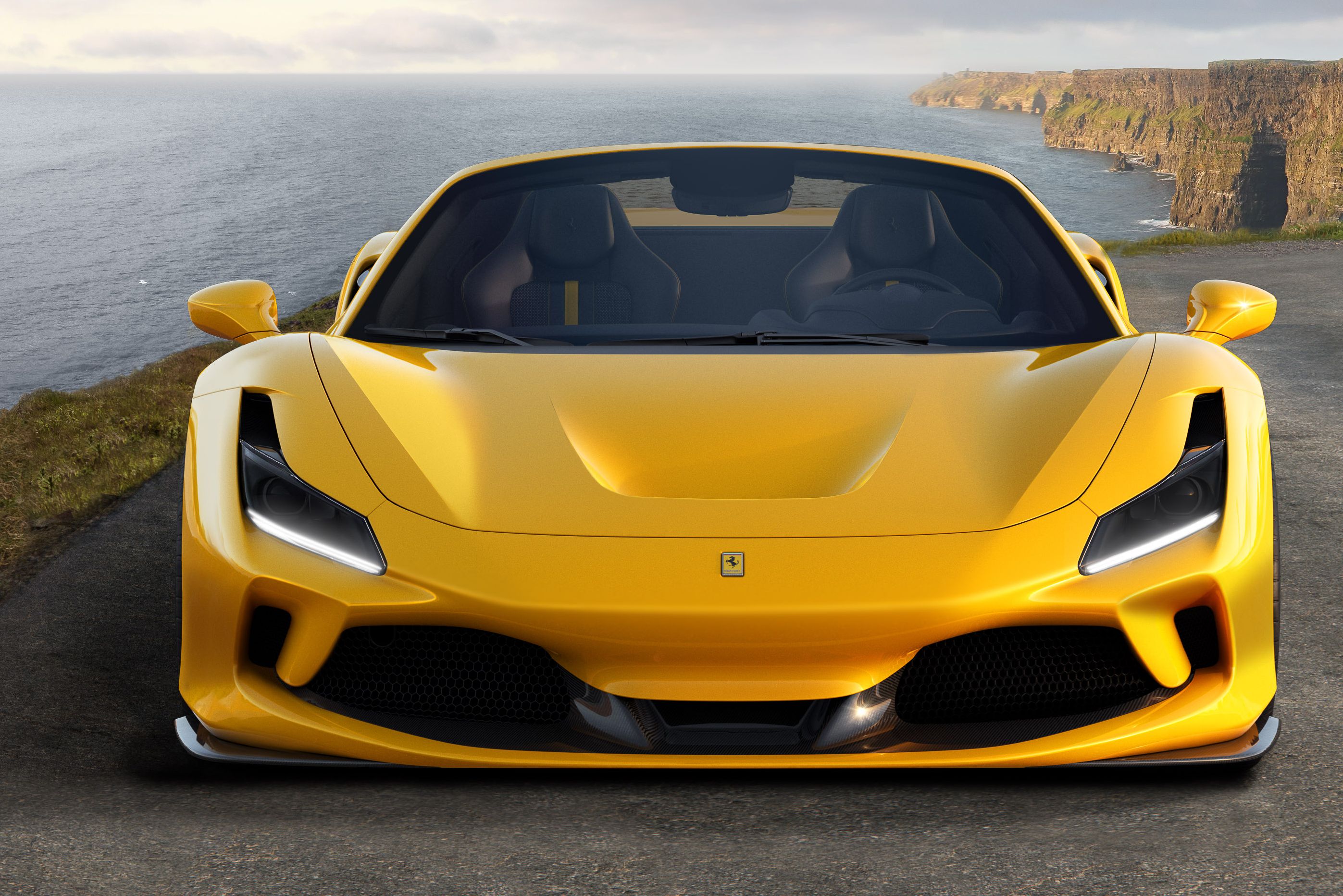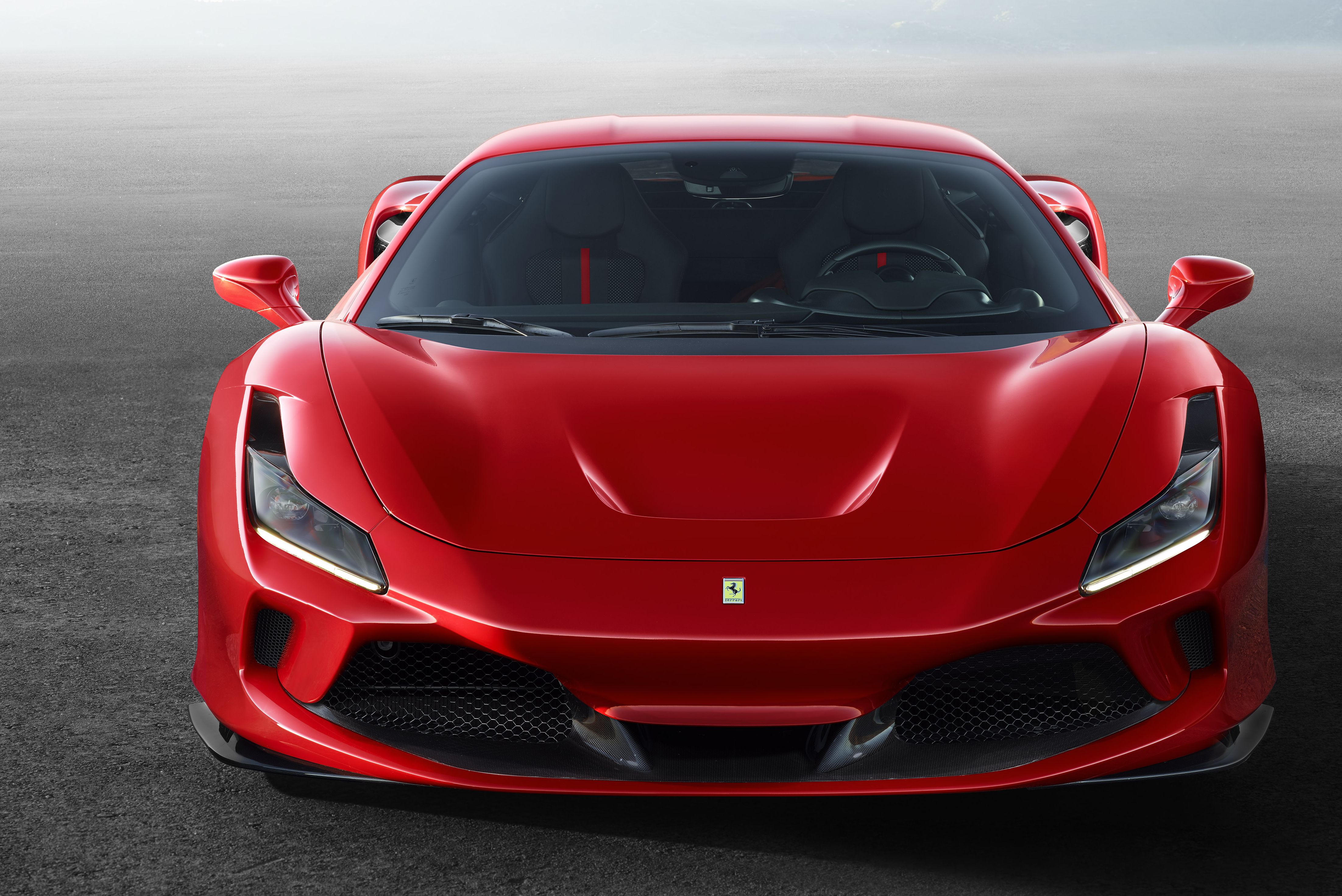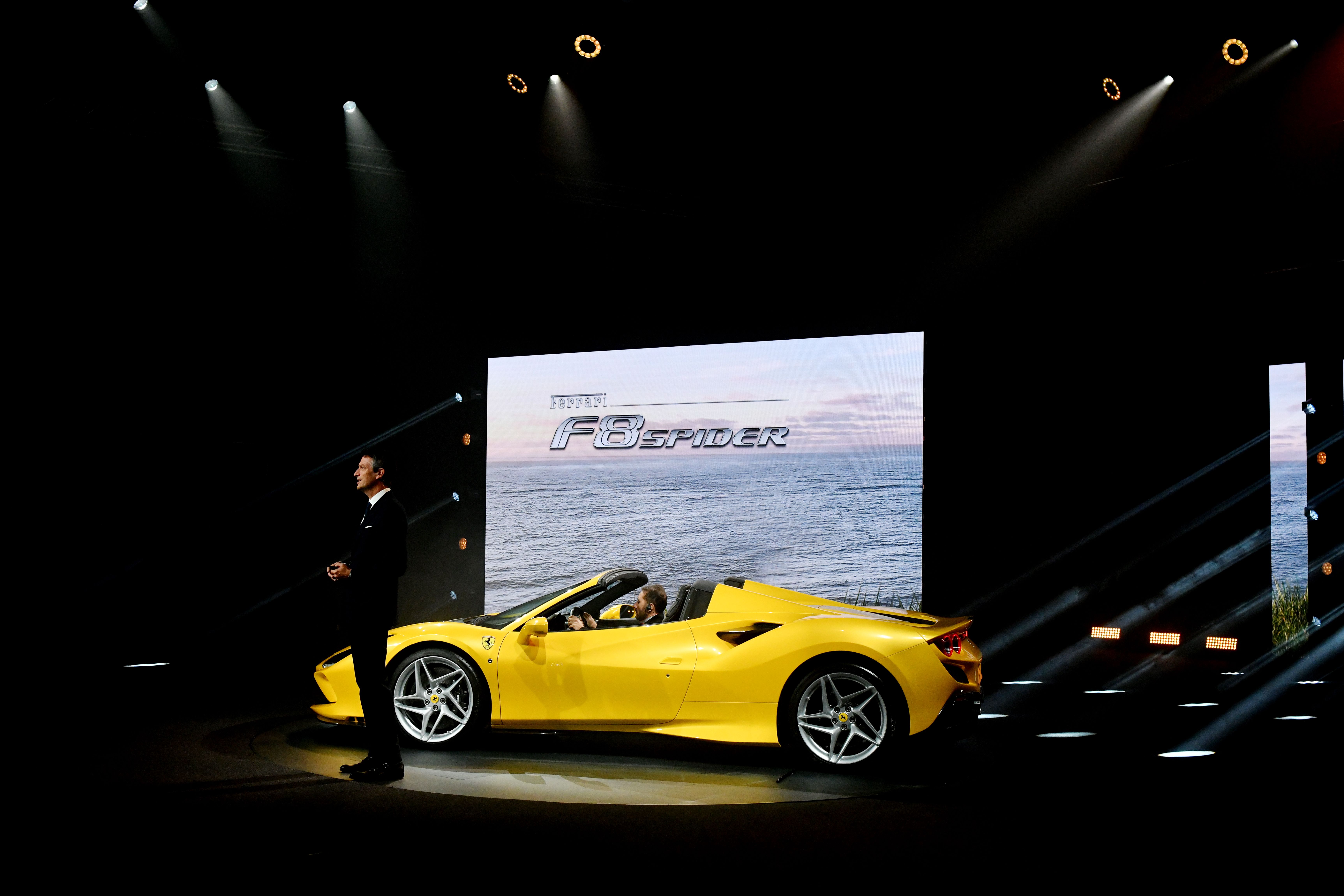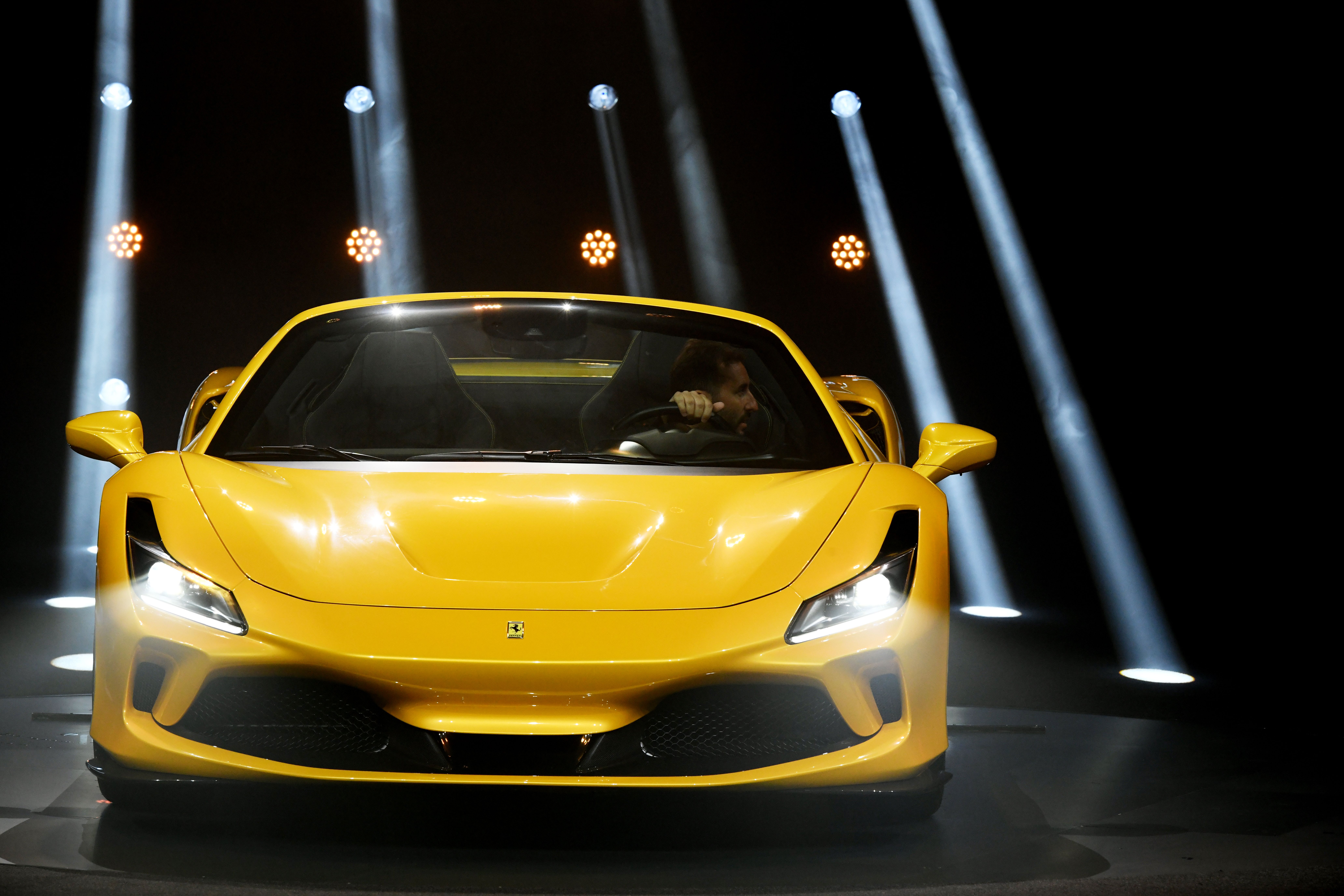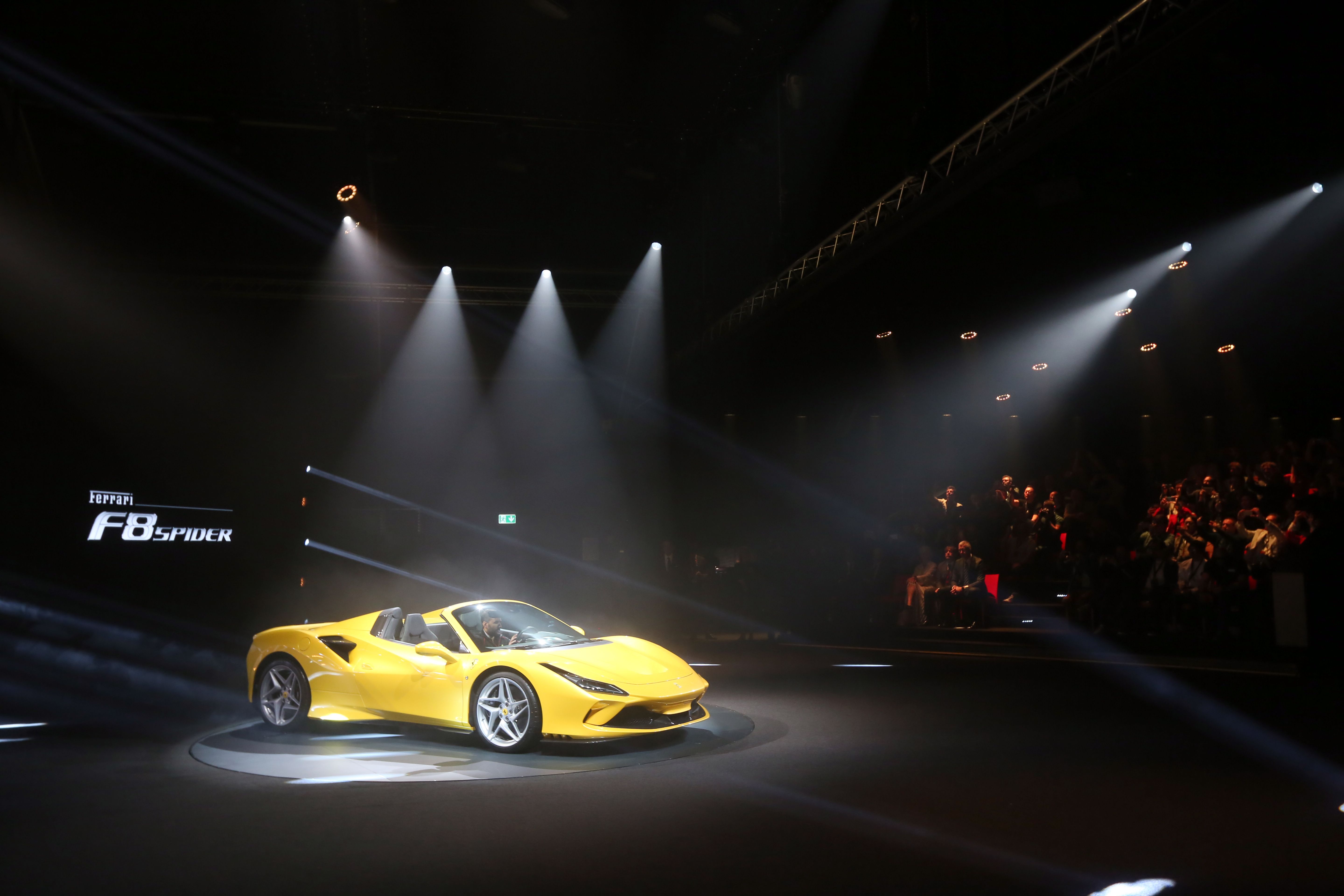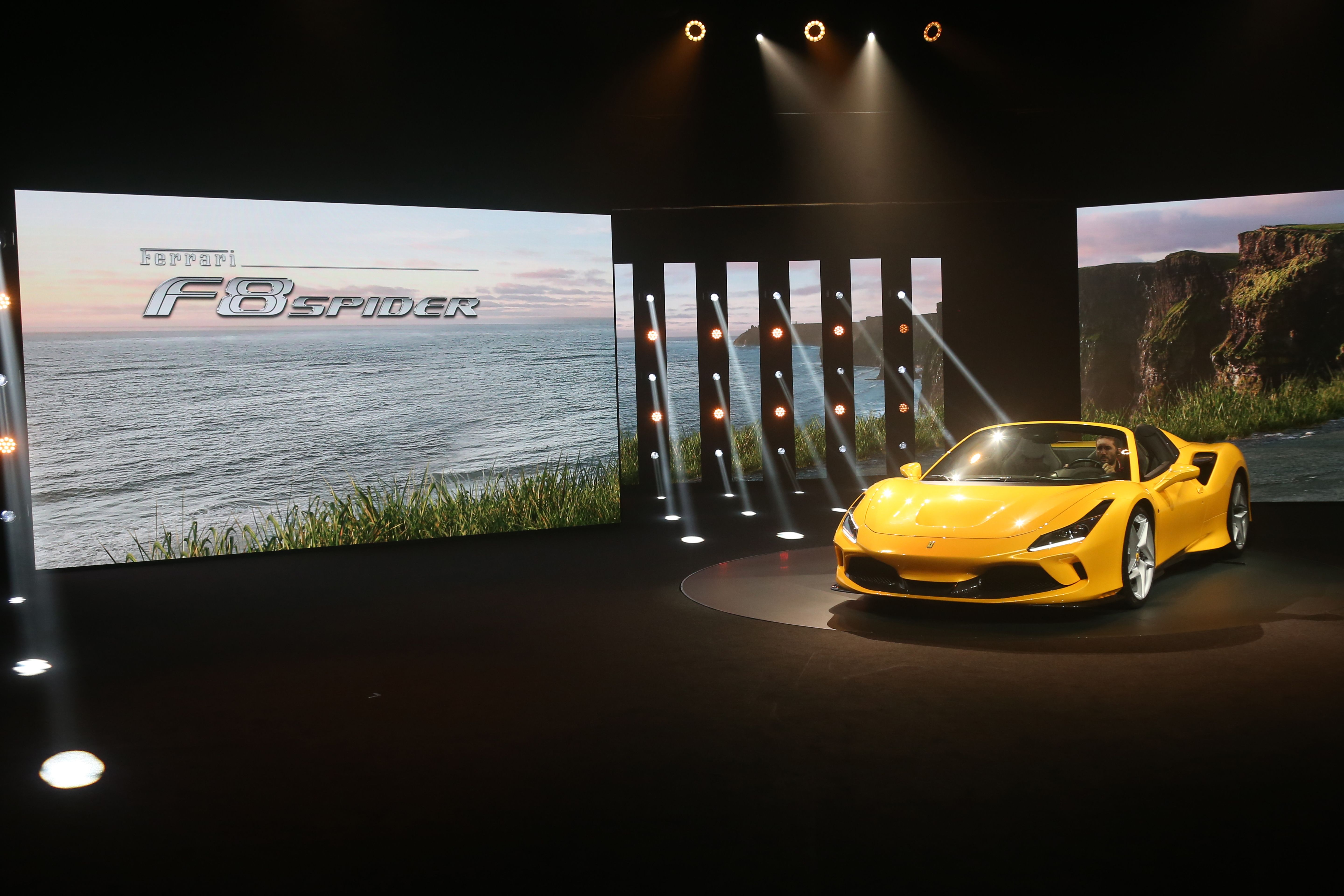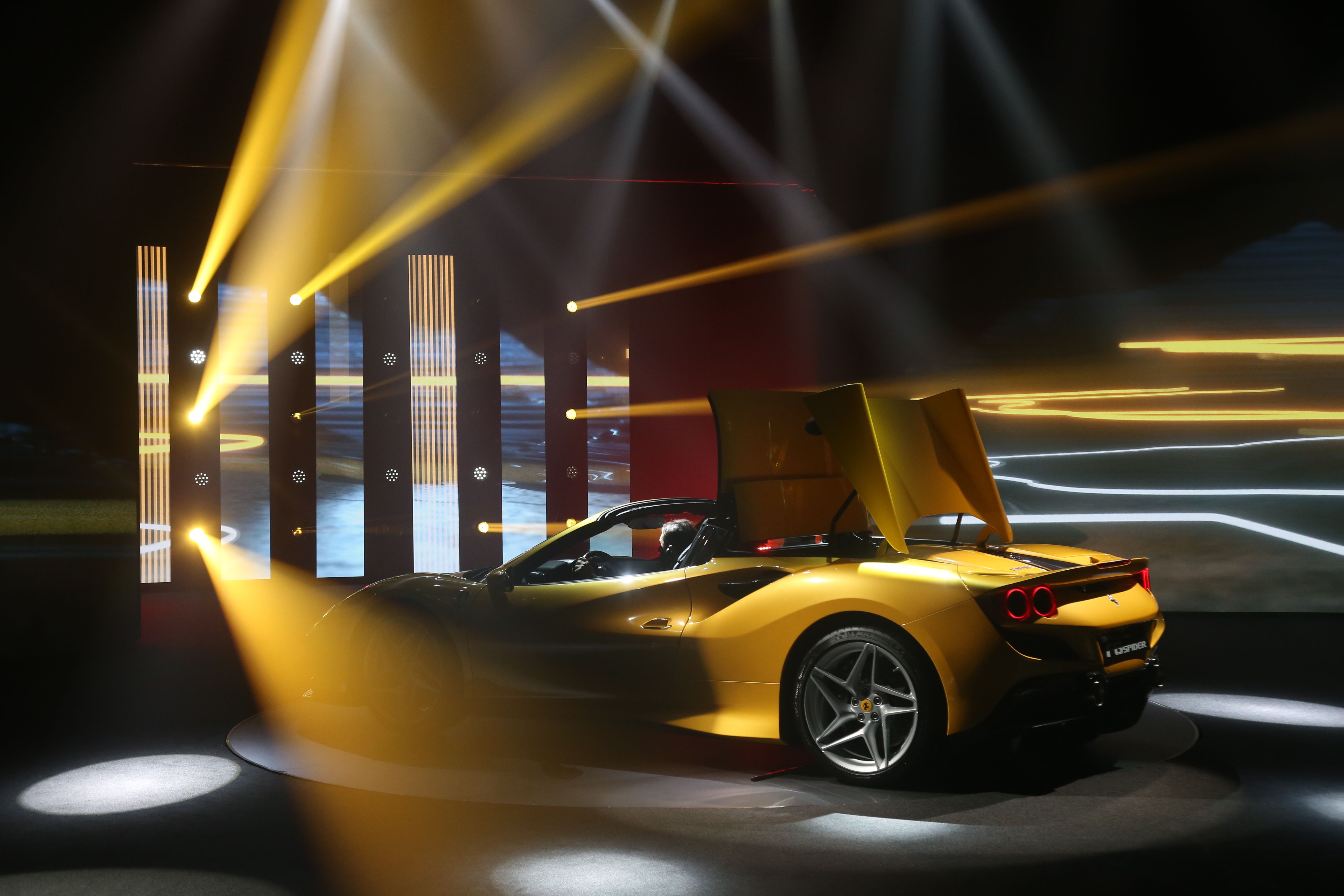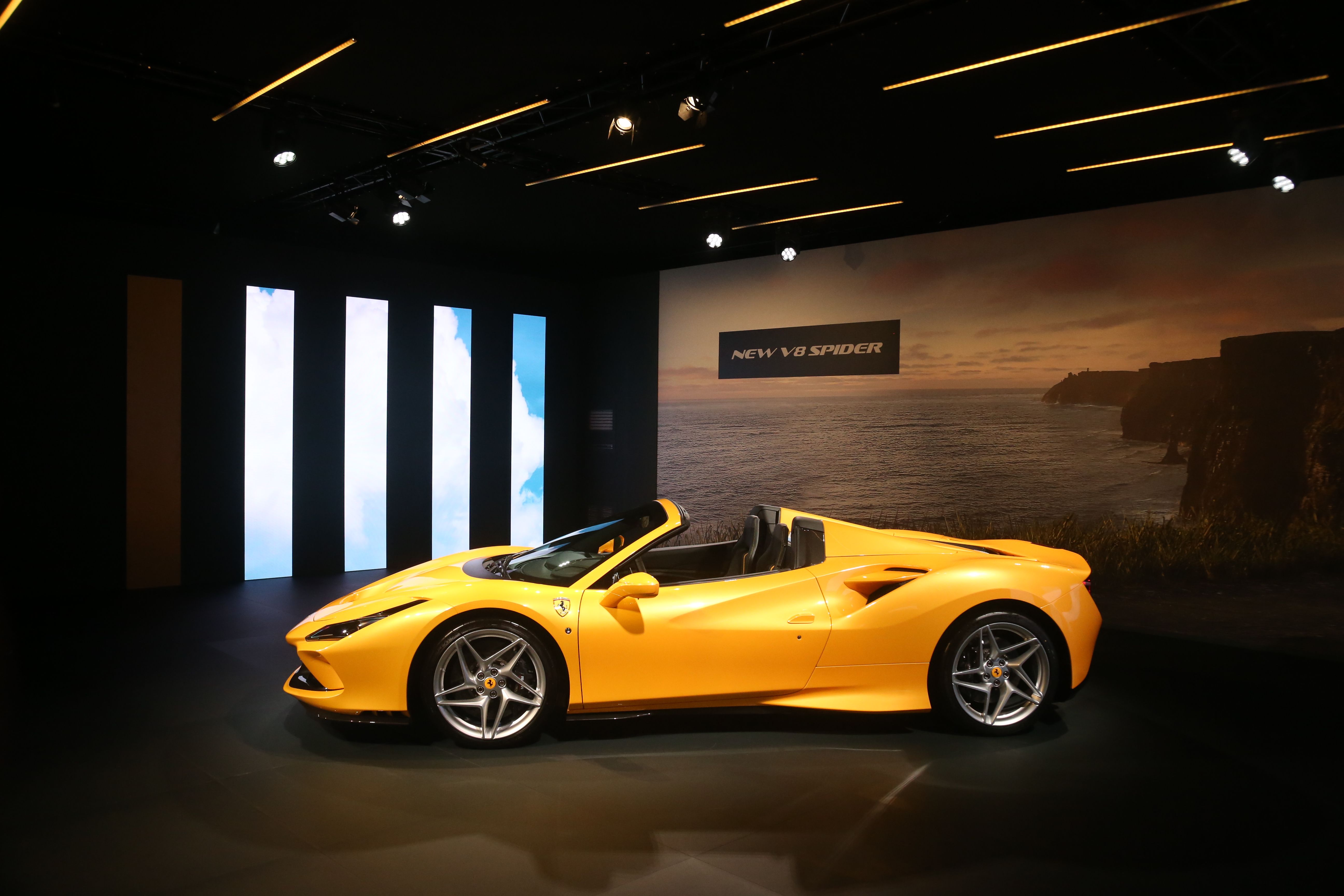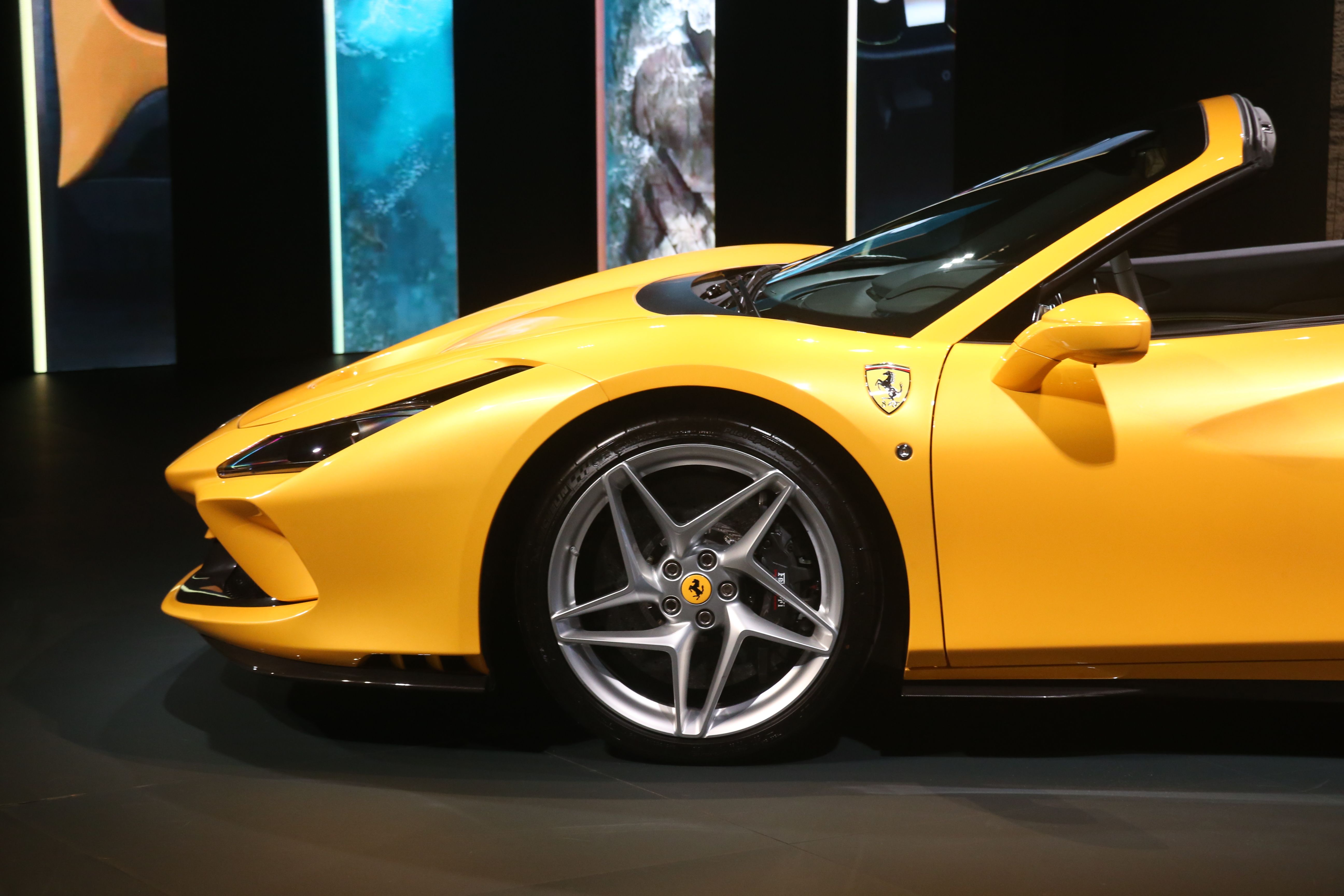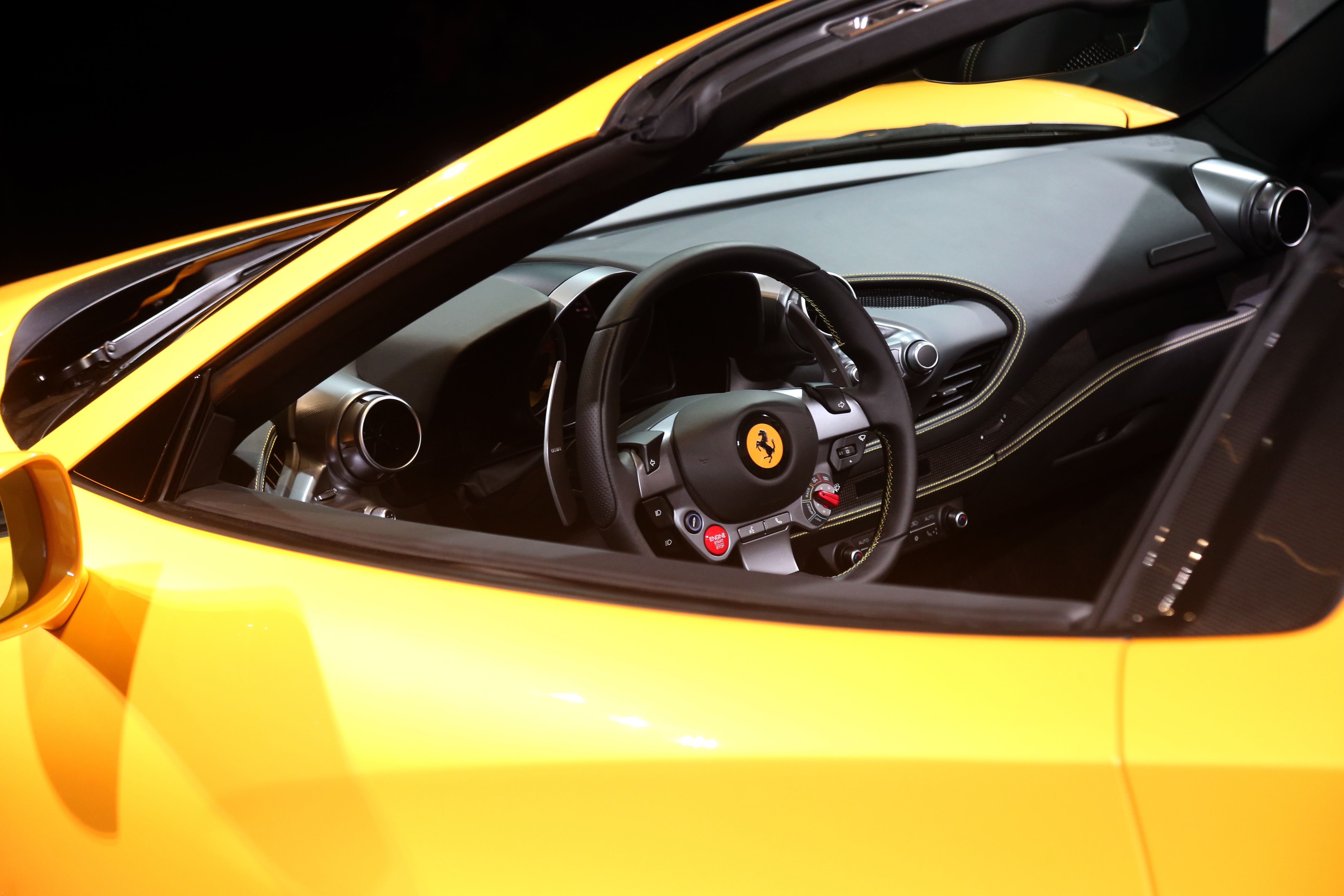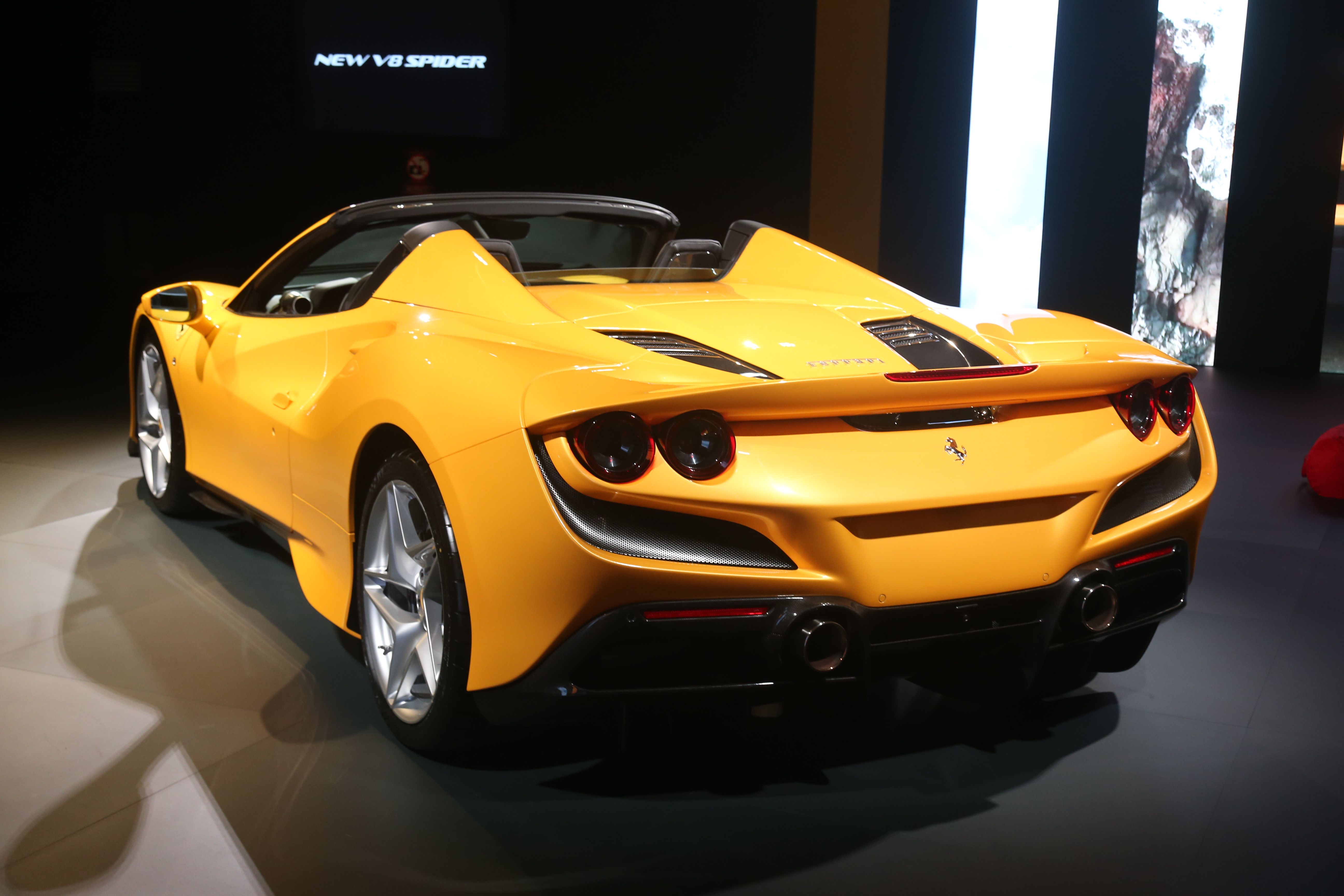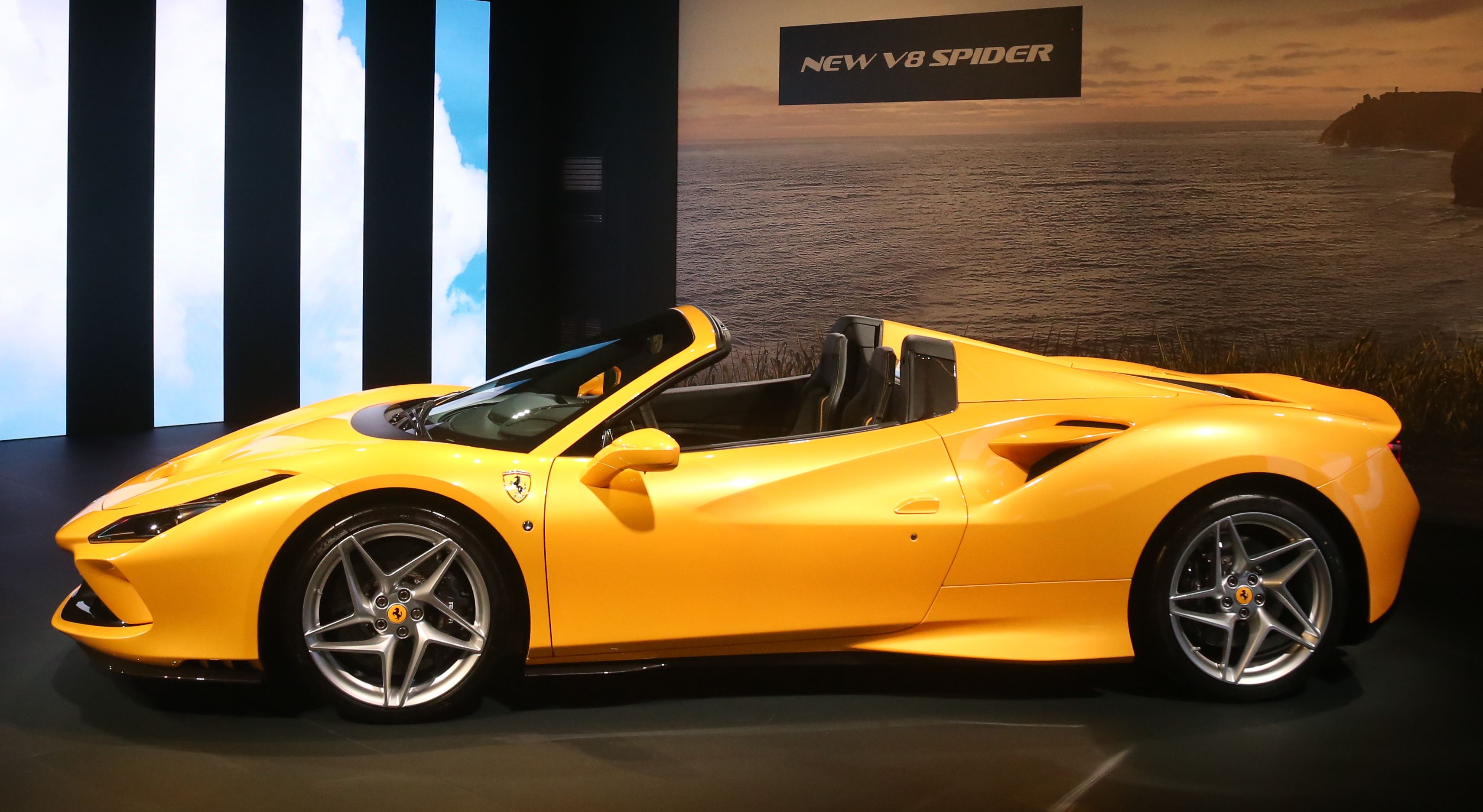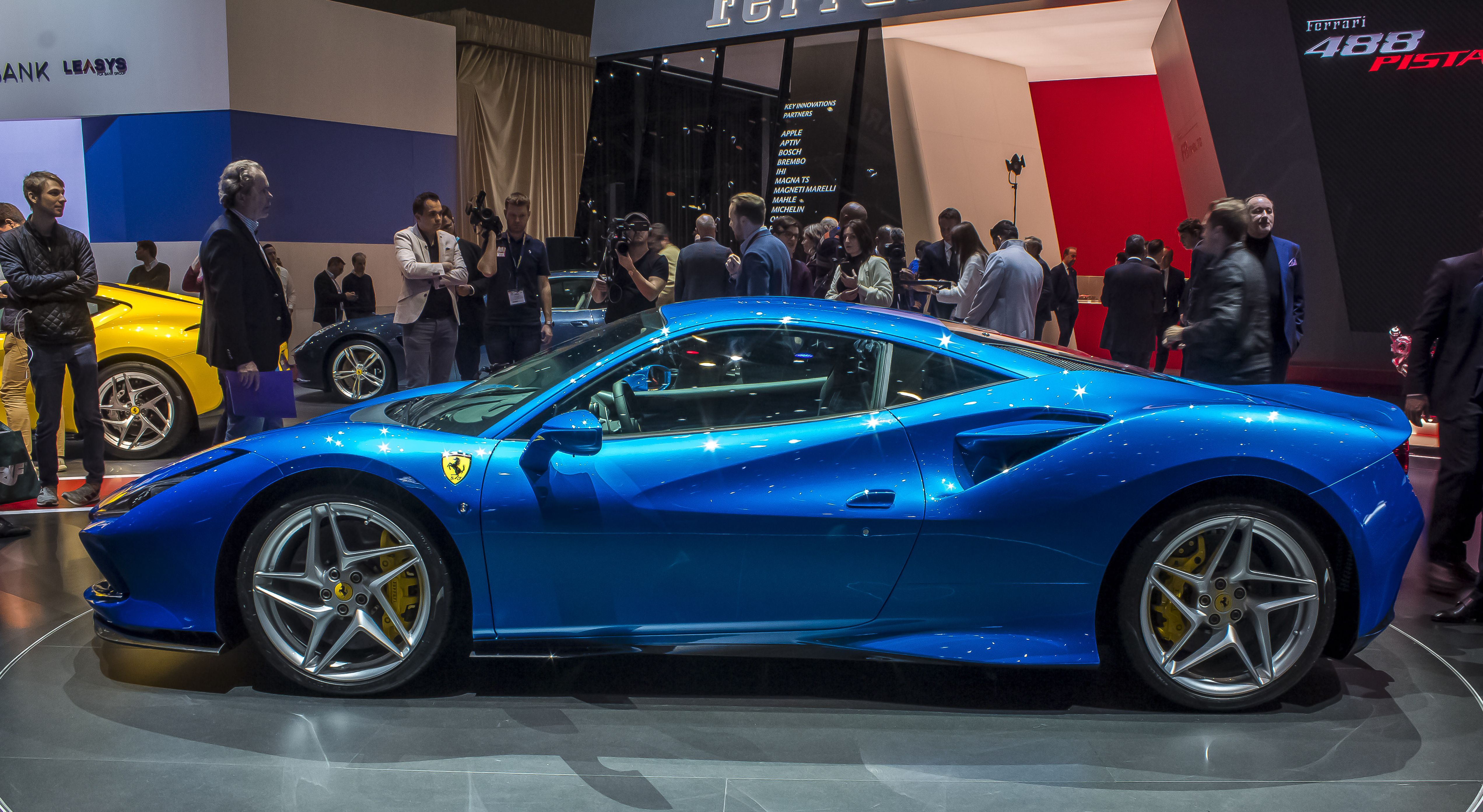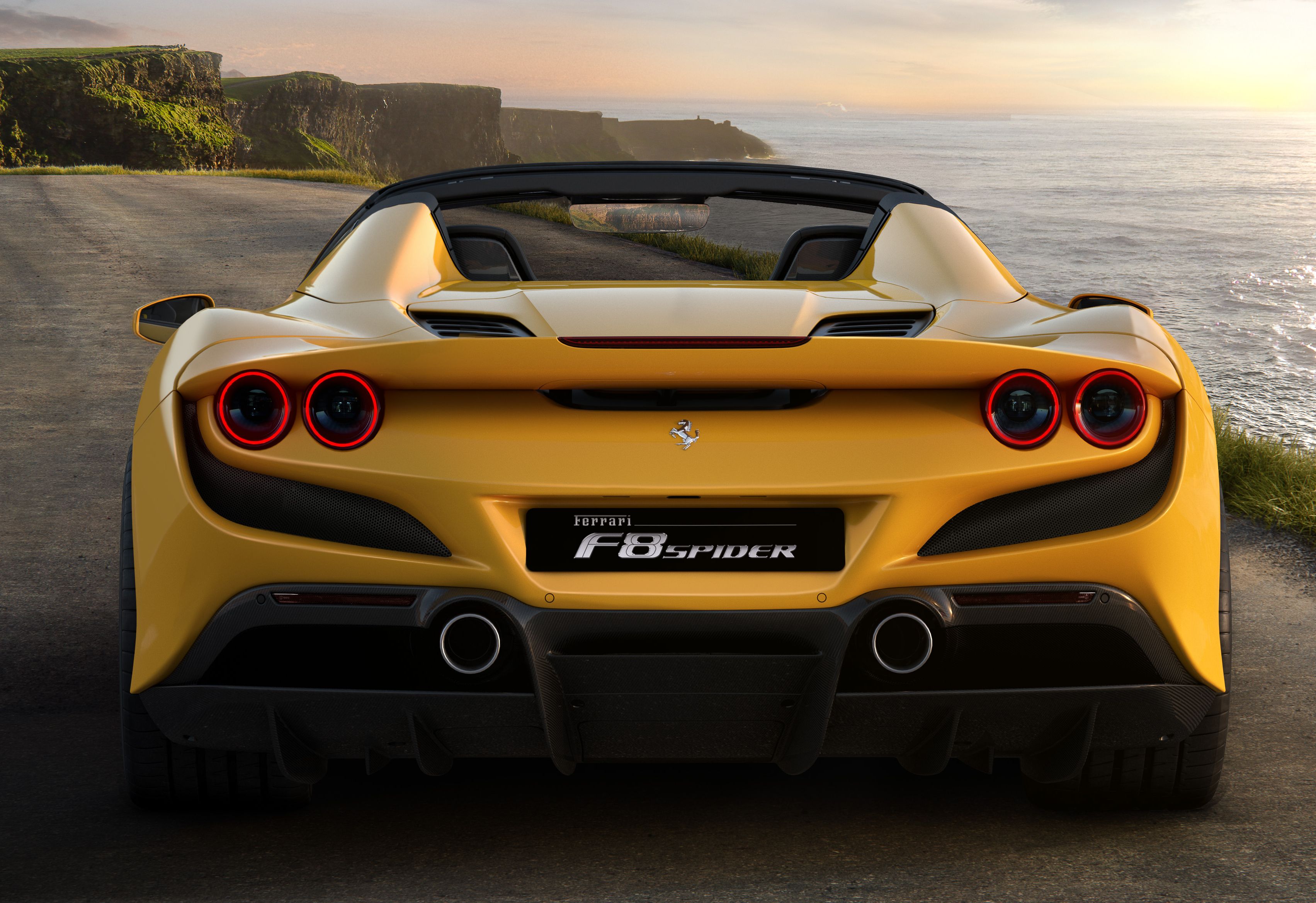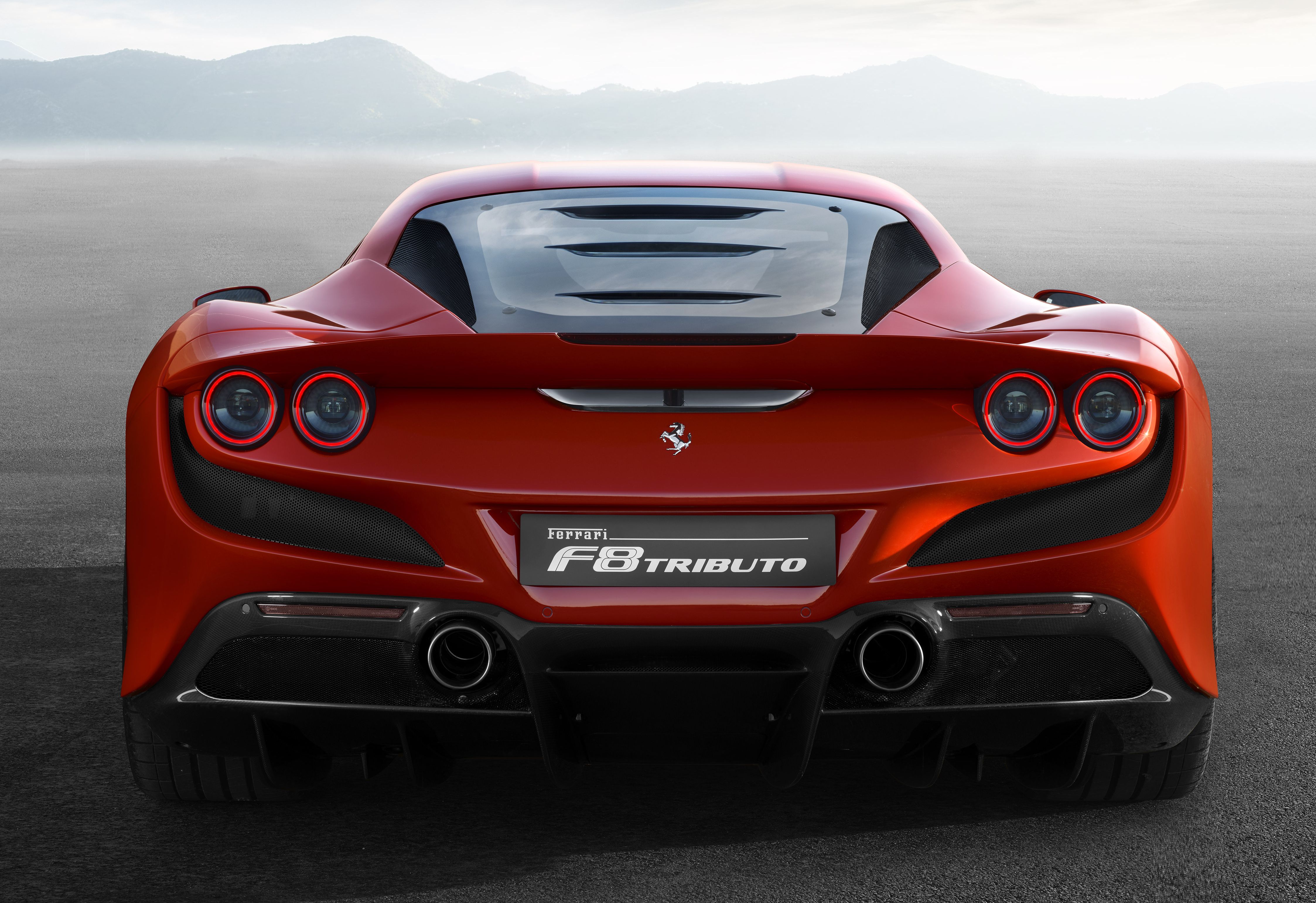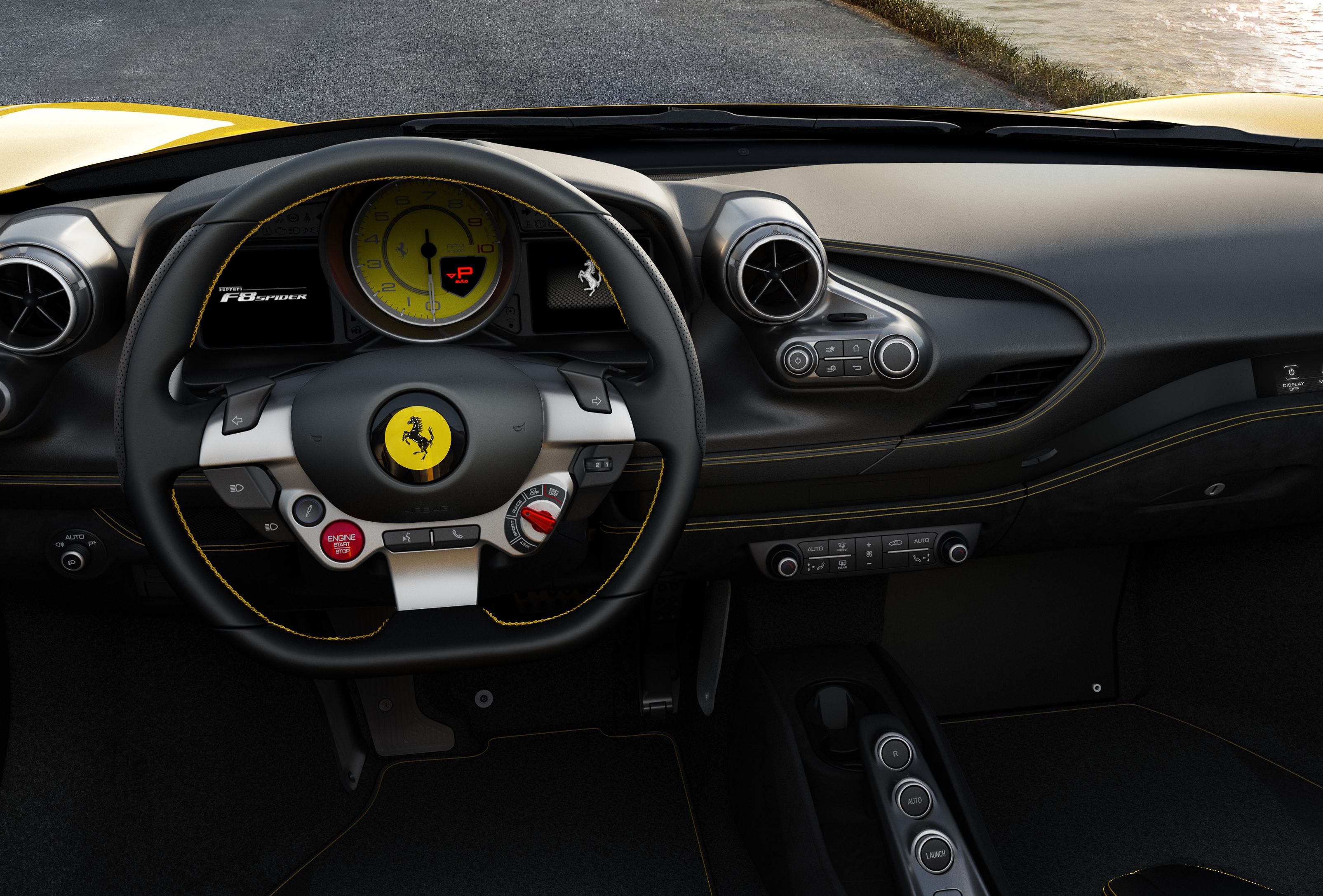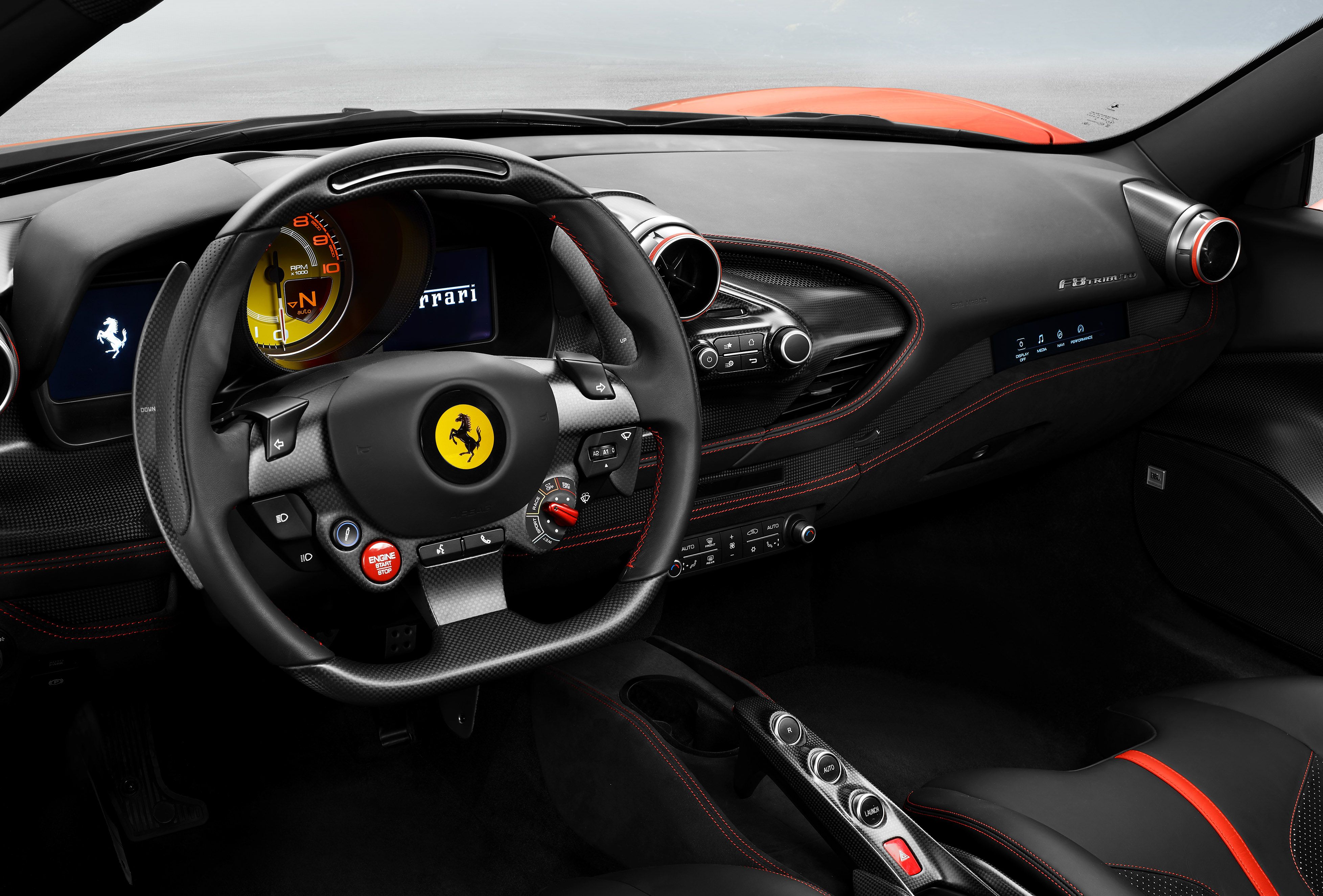The Ferrari F8 Spider is the convertible version of the F8 Tributo. It replaces the outgoing Ferrari 488 Spider in the lineup and just like its coupe counterpart, it features technology and underpinnings from the track-bred 488 Pista. While not as dynamic as the 488 Pista Spider, it's a solid improvement over the 488 Spider. The F8 Spider joins a prestigious bloodline of drop-top V-8 sports cars that begun with the iconic 308 GTS back in 1977.
Ferrari's most powerful V-8 convertible alongside the 488 Pista Spider, the F8 Spider arrives just in time to compete with the Lamborghini Huracan Evo Spyder. It also goes against the McLaren 720S Spider, yet another fine example of the high-performance sports car market. Find out what sets apart the F8 Spider from its predecessors and how it compares with its rivals in the detailed review below.
2020 Ferrari F8 Spider
- Make: Array
- Model: 2020 Ferrari F8 Spider
- Engine/Motor: V8
- Horsepower: 710
- Torque: 569
- [do not use] Vehicle Model: Array
Exterior
|
|
ids=860207,860208 |
no_overlay=false |
before_label=Ferrari F8 Spider |
after_label=Ferrari 488 Spider> |
The F8 Spider is essentially an F8 Tributo with a retractable roof and a redesigned engine hood and rear decklid, so it sports all the changes that Ferrari made compared to the old 488 GTB. Just like the Portofino and the 812 Superfast, both extensive facelifts of their predecessors, the F8 combines design features from the outgoing 488 with a few unique styling cues. Ferrari also borrowed features from the track-ready 488 Pista, so the F8 Spider basically bridges the gap between the regular 488 Spider and the 488 Pista Spider.
The front fascia is obviously identical to the coupe model. The bumper is based on the 488 Pista, featuring the same V-shaped opening in the center and large outlets on the sides, while the smaller vents at the corners suggest improved aerodynamics over the 488 Spider. The nose was redesigned from scratch and it's even more aggressive than the 488 Pista Spider. It also extends more above the splitter, a feature that suggests an F1-inspired design.
|
|
ids=862341,862342 |
no_overlay=false |
before_label=Ferrari F8 Spider |
after_label=Ferrari F8 Tributo> |
The F8’s profile is heavily based on the Pista, but the Spider stands out through a redesigned beltline, flying buttresses behind the B-pillars, and, of course, a retractable top. The latter is Ferrari's brand-new RHT design, a more compact and efficient top that doesn't hinder passenger space. Needless to say, the flying buttresses make the F8 Spider look particularly sexy when the roof is retracted under the decklid.
|
|
ids=862353,862354 |
no_overlay=false |
before_label=Ferrari F8 Spider |
after_label=Ferrari F8 Tributo> |
The rear fascia is identical to the F8 Tributo save for the engine hood. The diffuser is based on the 488 Pista and features aggressive fins and big exhaust pipes, while the rear fascia includes two angled outlets on each side. These vents flank the taillights toward the fenders and them descent to flank the license plate recess. Unlike the 488 Spider, the F8 Spider features the classic twin-light layout inspired by iconic V-8 berlinettas from the past, such as the 308 GTB.
|
|
ids=862355,862356 |
no_overlay=false |
before_label=Ferrari F8 Spider |
after_label=Ferrari F8 Tributo> |
The engine hood is a big departure from the coupe.
The revised bodywork also makes the F8 Spider some 10-percent more aerodynamic than the 488 Spider. One of the main features that contribute to this improvement is the S-Duct system in the front bumper. A solution that made its debut on the 488 Pista, it has been redesigned to suit the new bumper of the F8 Tributo and Spider.
Ferrari F8 Spider Exterior Specs
|
Length |
4611 mm |
|---|---|
|
Width |
1979 mm |
|
Height |
1206 mm |
|
Wheelbase |
2650 mm |
|
Front track |
1677 mm |
|
Rear track |
1646 mm |
|
Dry weight** |
1400 kg |
|
Weight distribution |
41.5% front – 58.5% rear |
|
Boot capacity |
200 l |
|
Fuel tank capacity |
78 l |
Interior
The cabin is also identical to the coupe save for two notable changes. There's a "Spider" badge on the passenger-side dashboard and you benefit from infinite headroom and wind in your hair with the top down.
Aside from that, you'll find all the changes that Ferrari made compared to the 488 GTB. And needless to say, these aren't massive and the cockpit still reminds me of the old supercar. Notable changes include turbine-look A/C vents, a revised control unit on the center stack, and a new seven-inch touchscreen display on the passenger-side dashboard. The steering wheel is based on the 488 Pista, so it has a more aggressive design and a new button layout, but the rim is a bit smaller.
|
|
ids=862357,862358 |
no_overlay=false |
before_label=Ferrari F8 Spider |
after_label=Ferrari F8 Tributo> |
The door panels and the center console look a bit different compared to the 488 GTB, but remain familiar and just as practical.
Drivetrain
The F8 Spider shares underpinnings with the F8 Tributo, so it comes with the same 3.9-liter V-8 engine. This mill is actually borrowed from the 488 Pista, so it cranks out more oomph than the one in the 488 Spider. Specifically, the twin-turbo unit generates 710 horsepower and 568 pound-feet of torque. That's a 50-horsepower and seven-pound-foot increase compared to the old 488 Spider.
This mill enables the F8 Spider to hit 62 mph from a standing start in 2.9 seconds, which makes it just as quick as the coupe model. The F8 Spider is also two tenths quicker than the 488 Spider and only 0.05 seconds slower than the 488 Pista Spider. Charging to 124 mph takes 8.2 seconds, four tenths slower than the F8 Tributo. On the other hand, the F8 Spider is a half-second quicker than the 488 GTB. Compared to the Pista Spider, the F8 Spider is only two tenths slower to this benchmark.
When it comes to top speed, the F8 Spider matches the Pista’s impressive 211-mph benchmark. That’s six mph more than the outgoing 488 GTB Spider and a solid benchmark for a convertible.
Ferrari F8 Spider vs 488 Spider specifications
|
Engine |
V8 - 90° - turbo – dry sump |
90° V8, turbo-charged, dry sump |
|---|---|---|
|
Overall displacement |
3902 cc |
3902 cc |
|
Max. power output* |
710 HP @ 8000 RPM |
660 HP @ 8000 RPM |
|
Max. torque* |
569 LB-FT @ 3250 RPM |
560 LB-FT @ 3000 RPM in VII gear |
The F8 Spider borrows all the cool technology launched in the Tributo model. It comes with the latest version of the Side Slip Angle Control, which incorporates technologies such as E-Diff3, F1-Trac, the magnetorheological suspension, and the Ferrari Dynamic Enhancer. The latter debuted in the 488 Pista.
So is the F8 Spider a threat to its rivals, the Lamborghini Huracan Evo and the McLaren 720S Spider? Just like the F8 Spider, the Huracan Evo Spyder comes with the same engine as the track-prepped Huracan Performance. However, the naturally aspirated, 5.2-liter V-10 engine is nowhere near as powerful as Ferrari's V-8. Rated at 631 horsepower, it falls behind the F8 by 79 horses.
The Huracan Evo Spyder is obviously slower than the F8 Spider from 0 to 62. The Italian supercar needs 3.1 seconds to hit the benchmark, two tenths slower than its Maranello-built counterpart. The Ferrari is also more than a full second quicker to 124 mph. The Lambo's top speed is notably lower at 202 mph, nine mph below the F8 Spider.
Things change when we compare the F8 Spider to the McLaren 720S Spider. Powered by a twin-turbo, 4.0-liter V-8, it cranks out 710 horses, just as much as the Ferrari. But the British supercar is a tenth-second quicker to 62 mph and hits a top speed of 212 mph. Although it's not massively quicker, the 720S Spider is around 100 pounds lighter than the Italian roadster.
Pricing
Pricing information for the Ferrari F8 Spider is not yet available, but it will cost more than the Tributo. The coupe retails from $274,280, so the F8 Spider could fetch around $300,000 before options.
Competition
Lamborghini Huracan Evo Spyder
Since the 488 GTB went against the Huracan, it’s only natural to consider the F8 Tributo a competitor for the Huracan Evo. As a result, the F8 Spider is a competitor for the Huracan Evo Spyder. Both supercars feature similar updates for their mid-cycle facelifts with design changes and powertrains borrowed from their track-ready counterparts, the 488 Pista and Huracan Performante, respectively. However, they're notably different under the hood. While Ferrari adopted twin-turbo technology for its V-8, Lambo remained true to its roots and kept the naturally aspirated V-10 mill alive. Rated at 631 horsepower, the Huracan Evo is notably less powerful and it also two tenths slower to 62 mph. Likewise, it falls behind when it comes to top speed at 202 vs 211 mph. The Huracan Evo Spyder wins the pricing battle by a small margin with a sticker of around $293,000.
Read our full review of the 2019 Lamborghini Huracan Evo Spyder
McLaren 720S Spider
Arguably the best-performing supercar on this list, the 720S arrived in 2017 as a replacement for the 650S. In 2019, McLaren rolled out the convertible model under the "Spider" badge. A more aggressive proposition design-wise, the 720S is also the most advanced vehicle in its class, featuring state-of-the-art tech and McLaren’s latest carbon-fiber tub. It has a rotating instrument cluster, leather and Alcantara interior options, and carbon-fiber trim inside and out. It’s also just as powerful as the F8 Spider thanks to its twin-turbo, 4.0-liter V-8 that generates 710 horsepower and 568 pound-feet of twist. The sprint to 62 mph takes 2.8 seconds, a tenth-second quicker than the F8 Spider, while its top speed is slightly superior at 212 mph. The 720S is a bit more expensive though, starting from $315,000 before options.
Read our full story of the 2019 McLaren 720S Spider.
Final Thoughts
The F8 Spider is far from a surprising appearance. With the 488 Spider discontinued and the F8 Tributo launched earlier in 2019, it was just a matter of time until the F8 would lose its top spot. Now that it happened, I can say that the awesome 488 Spider was replaced by a worthy supercar. Sure, it falls behind the McLaren 720S, but it's powerful enough to give you a healthy dose of endorphins on both the highway and the race track. Sure, it's expensive and all, but it's also highly exclusive and its value will remain steady over time. This isn't a Mazda Miata, but a track-bred supercar for the road.
Further reading
Read our full review on the 2020 Ferrari F8 Tributo.
Read our full review on the 2016 Ferrari 488 Spider.
Read our full review on the 2019 Ferrari 488 Pista Spider.

